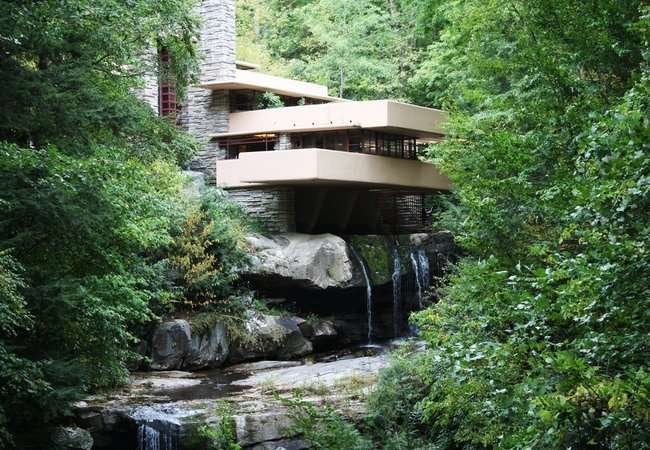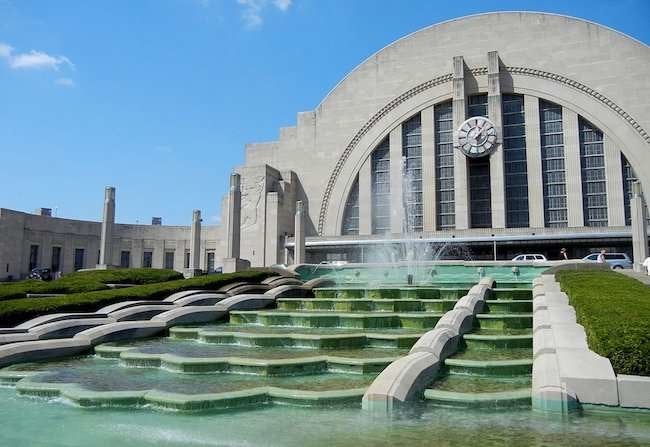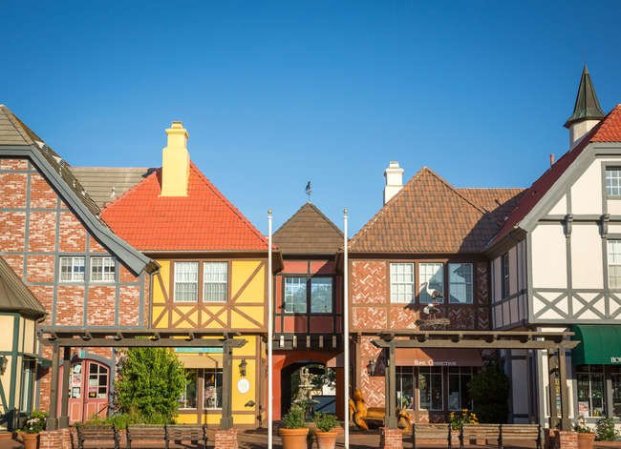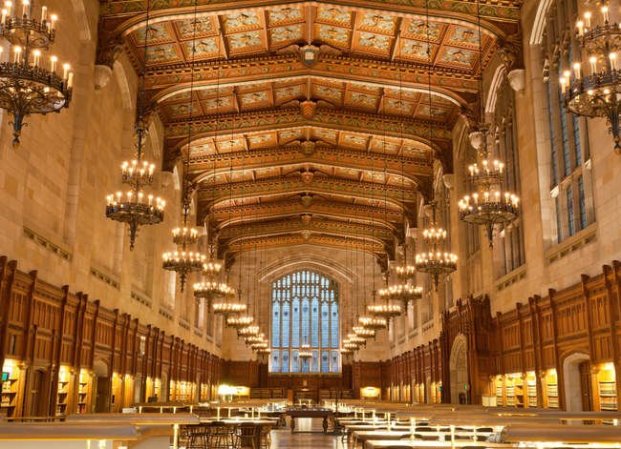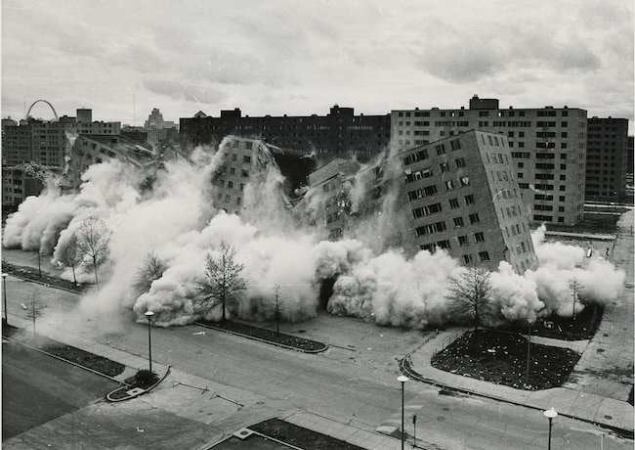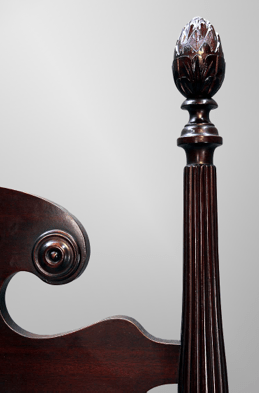We may earn revenue from the products available on this page and participate in affiliate programs. Learn More ›
Empire State Building in New York, New York
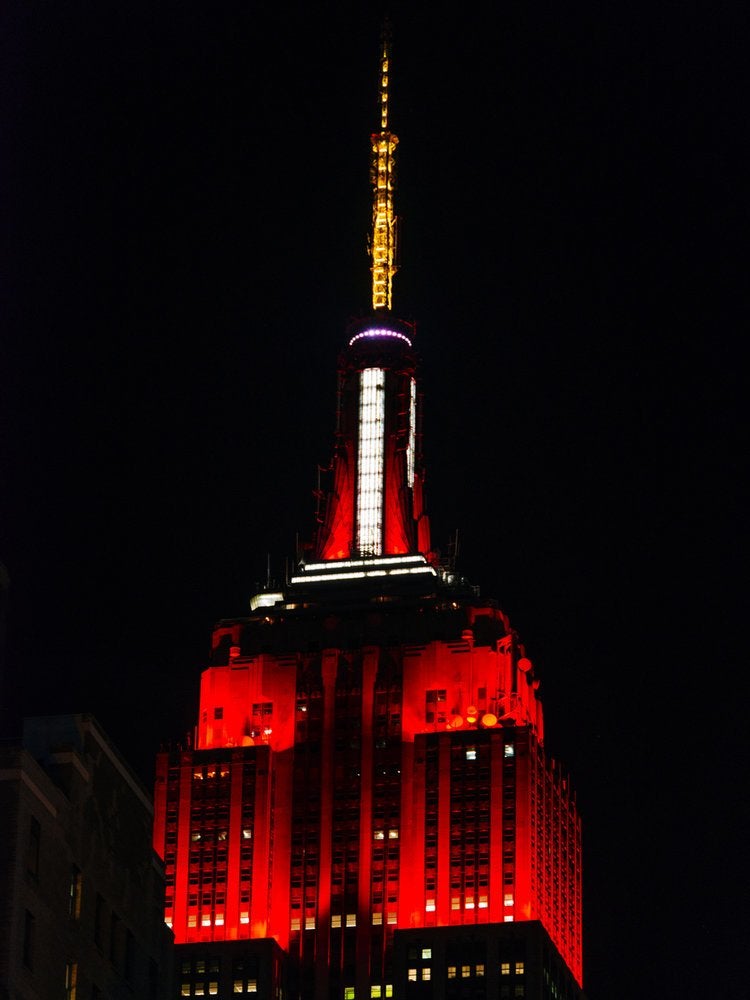
New York was known as the Empire State long before construction on the iconic skyscraper of the same name ever broke ground. Today, though, the 102-foot Art-Deco building may be more famous than the state’s nickname, with millions visiting the 86th- and 102nd-floor observation decks every year—all in pursuit of a birds-eye view of Manhattan.
Related: America’s 50 Most Famous Houses
Washington Monument in Washington, D.C.
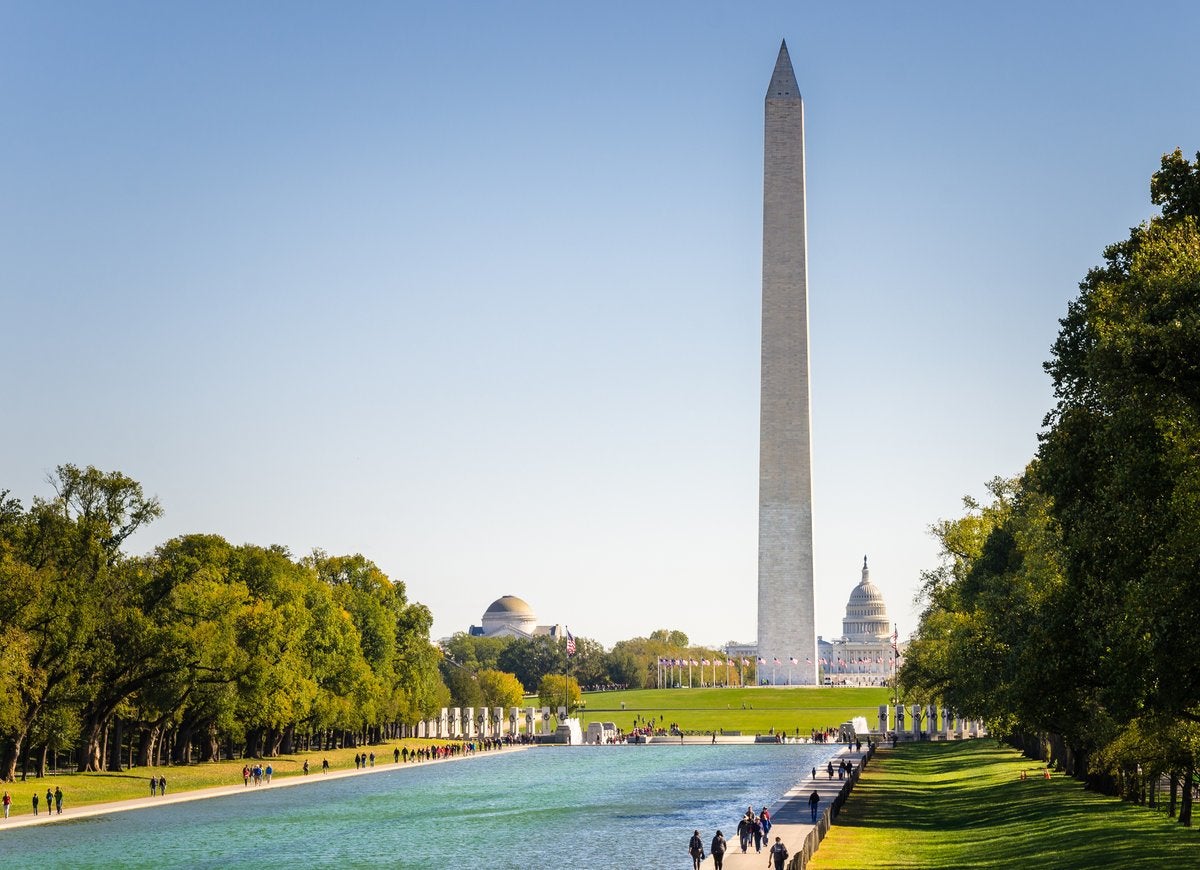
Construction on this Egyptian-style obelisk spanned four decades (1848 to 1888), but the nation’s waiting was rewarded with an icon of real stature, measuring in at 554 feet and seven inches. The structure gets its stately and solemn color from a mix of marble, granite, and a type of metamorphic rock known as bluestone gneiss.
The Golden Gate Bridge

Bay-Area commuters would be in dire straits without access to this 8,981-foot-wide suspension bridge, completed in 1937. The fiery red paint that has made the Art-Deco bridge the face of the “Fog City” on many a postcard actually has a special name in the aerospace industry: International Orange.
Related: From Bridges to Stadiums: 13 U.S. Icons That Are Falling Apart
The U.S. Capitol in Washington, D.C.
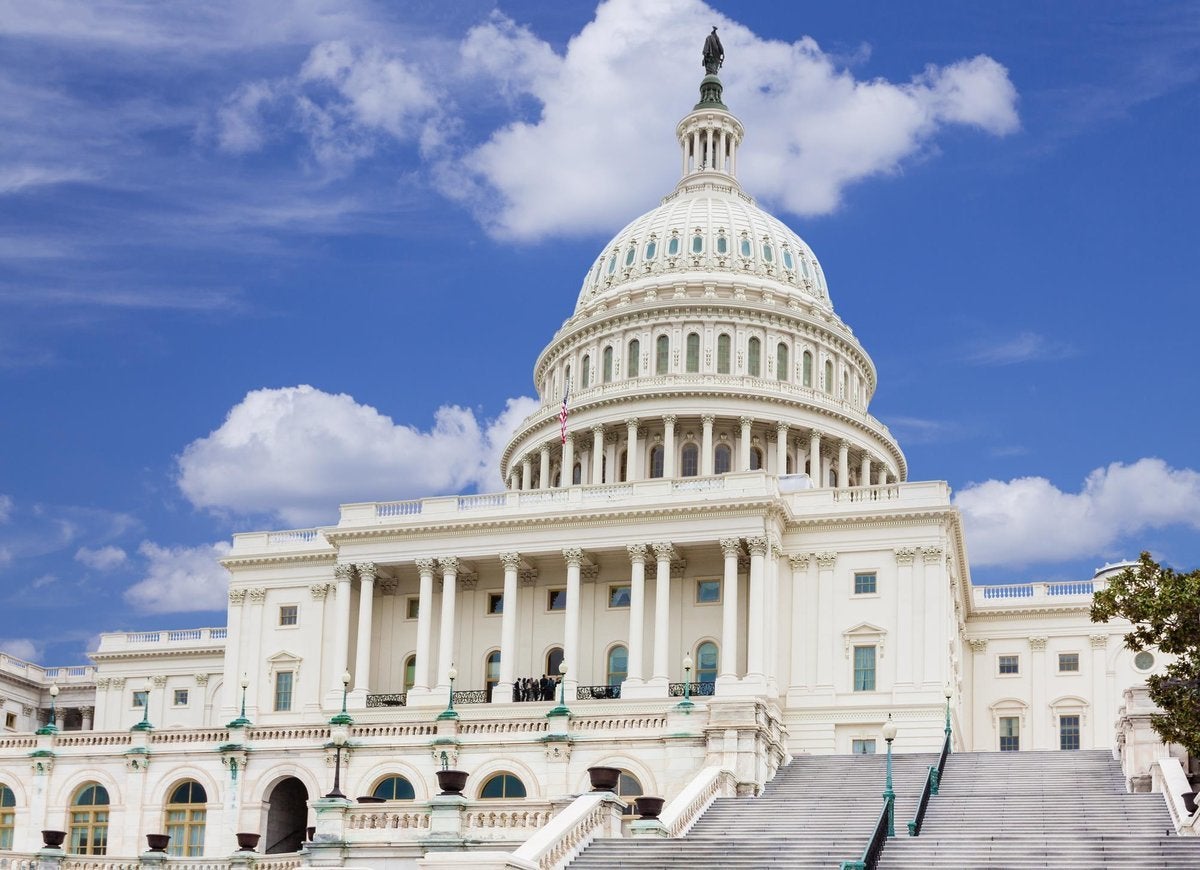
Built between 1793 and 1800, this Neoclassical building serves as the home of the U.S. House of Representatives, the Senate, and some of the most hotly-contested political debates in American history.
White House in Washington, D.C.
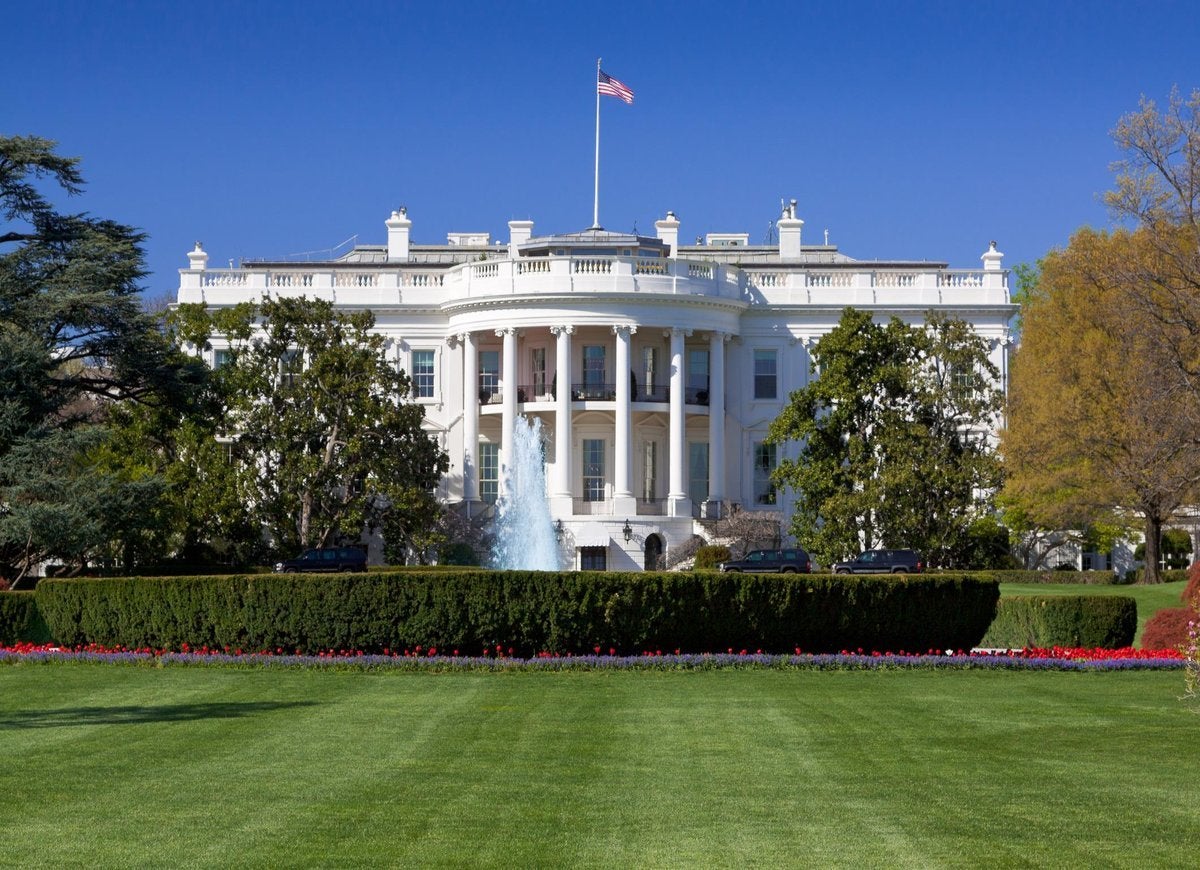
Architect James Hoban pulled out all the stops when designing this renowned American landmark, which featured sandstone walls, elegant colonnades, and even a hidden stable. Built primarily by African-American workers—both enslaved and free—it was completed in 1800 and has witnessed many changes over the years, in terms of architecture, social progress, and political maneuvering.
Space Needle in Seattle, Washington
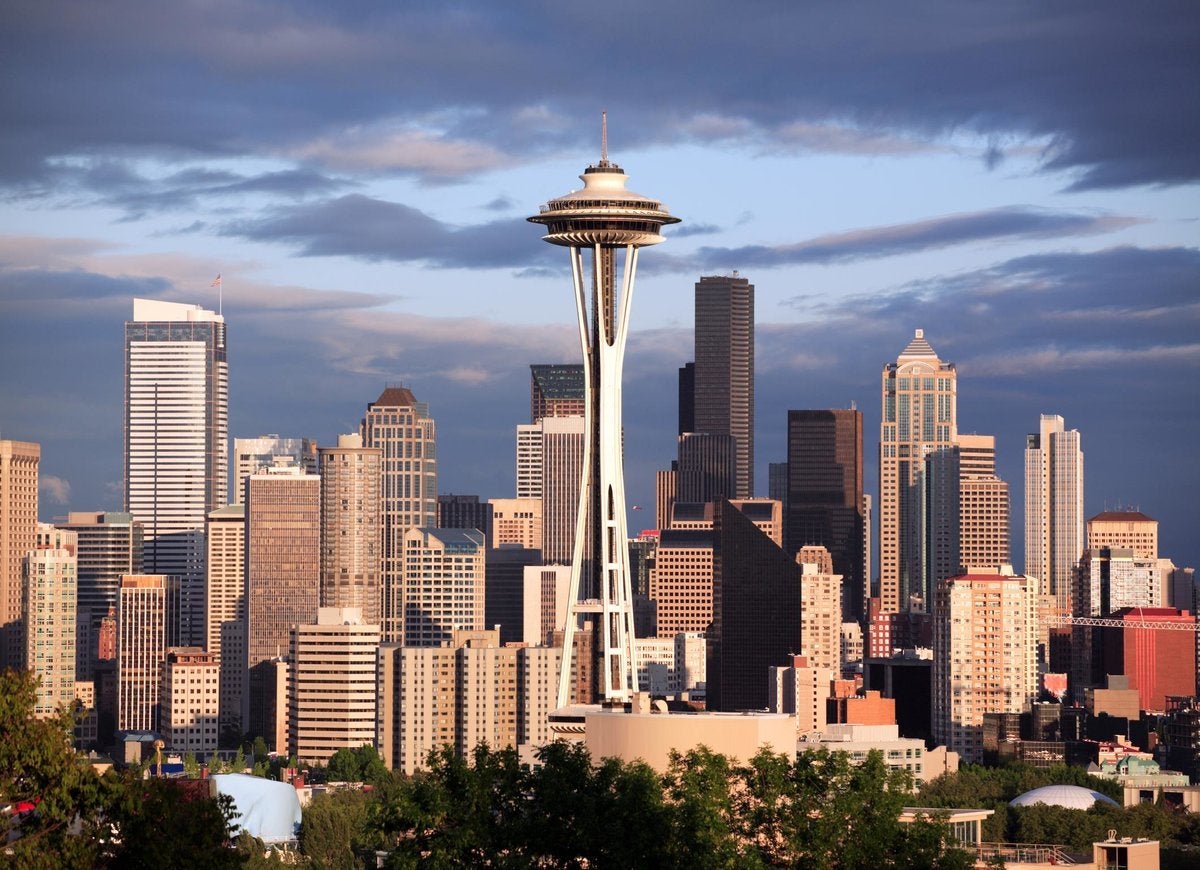
Businessman Edward Carlson and architect John Graham initially disagreed on the shape of the Space Needle—the former wanted a floating balloon and the latter a flyer saucer. But between 1961 and 1962, their competing visions converged to produce a futuristic fixture of the Seattle skyline that the Jetsons themselves would envy.
Monticello in Charlottesville, Virginia
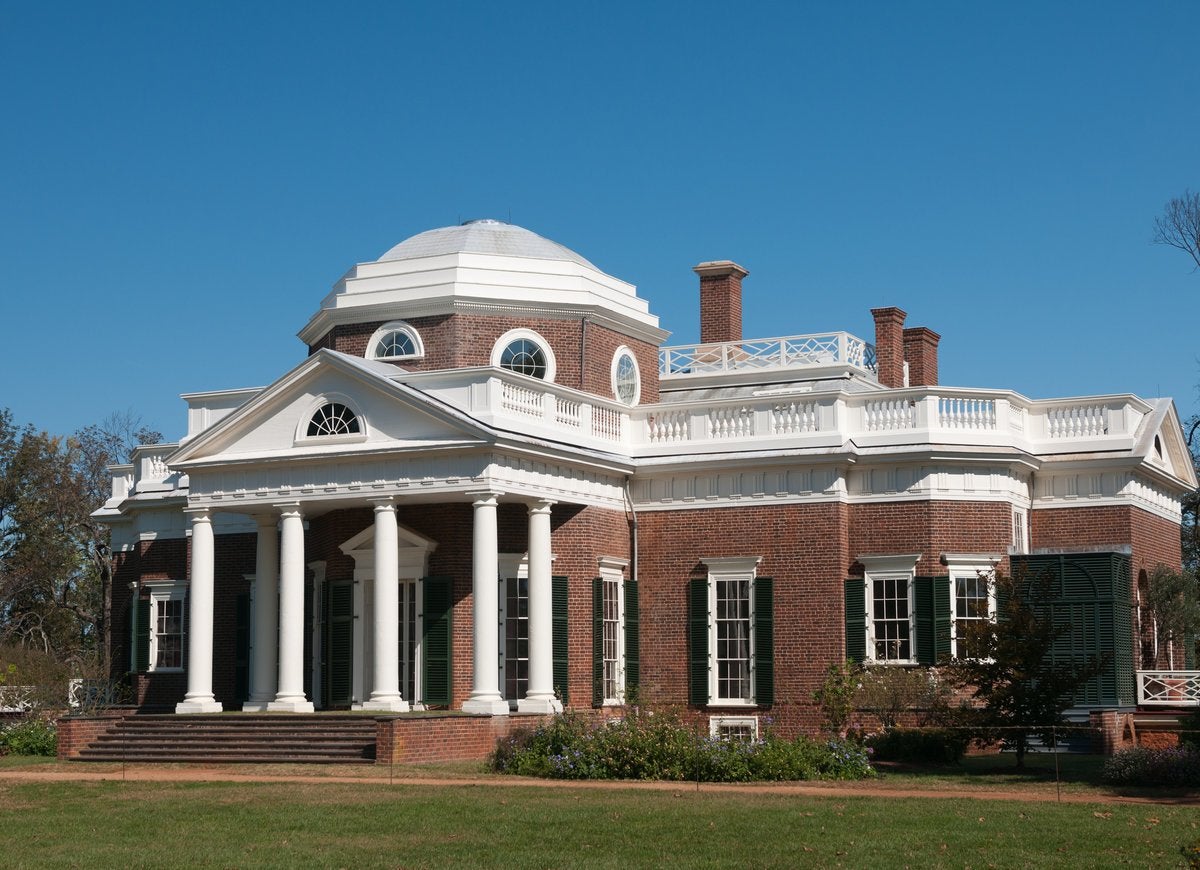
Little did a 26-year-old Thomas Jefferson know when he first set out to build his 5,000-square-foot plantation estate that it would grace the backs of nickels hundreds of years after its construction.
Related: 13 Homes from the Original Colonies that Still Stand Today
The Pentagon in Arlington, Virginia
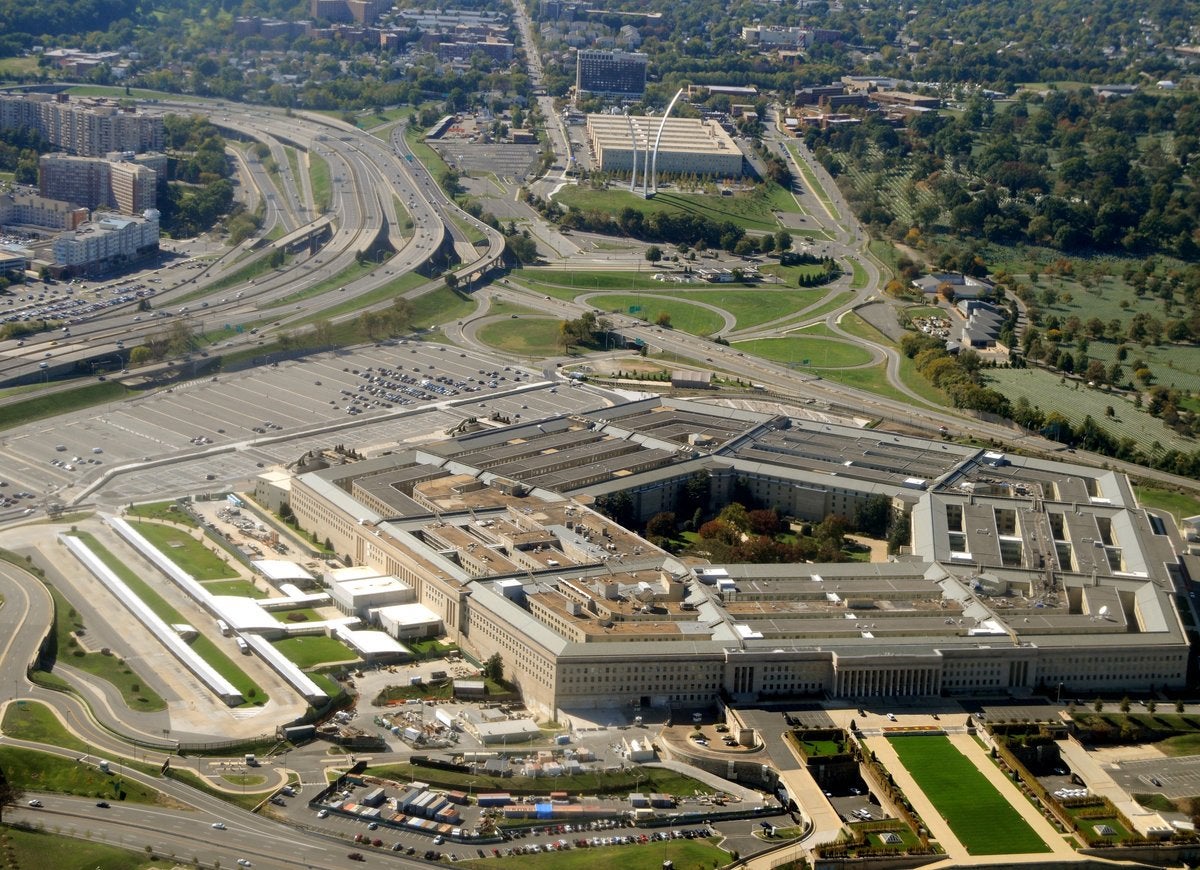
Completed in 1943, the headquarters of the U.S. Department of Defense features five sides, five main floors, and five concentric pentagons, a design that makes it possible to walk between any two points of the building in under seven minutes.
Related: 20 Towns That Used to Run America
Fallingwater in Mill Run, Pennsylvania
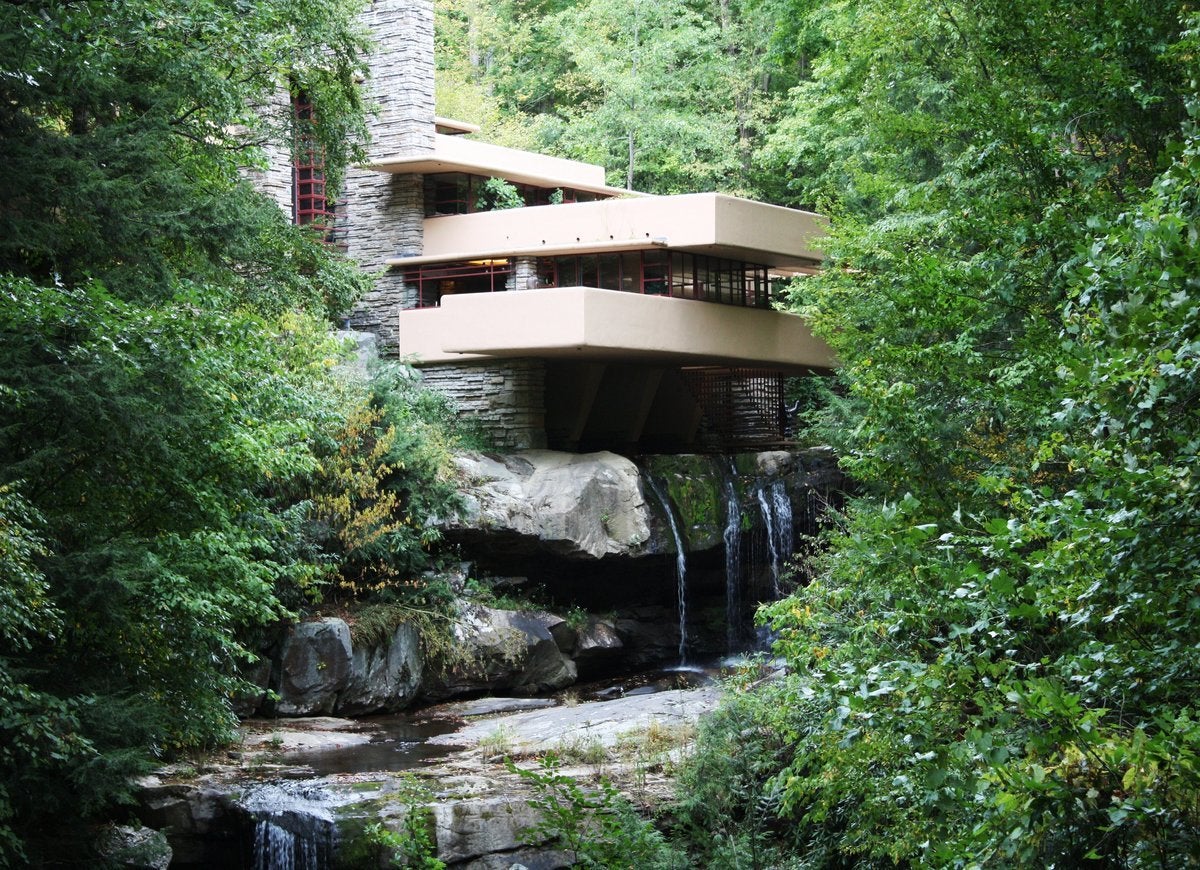
flickr.com (billrock54)
Neither a team of reluctant engineers nor gravity itself could keep architect Frank Lloyd Wright from achieving one of his most daring designs in 1939. His cantilevered construction was built directly over a waterfall of the Bear Run tributary to house Kaufmann’s Department Store owner Edgar J. Kaufmann, Sr. and his family.
Related: 15 Places Every American Should Visit at Least Once
Biltmore Estate in Asheville, North Carolina
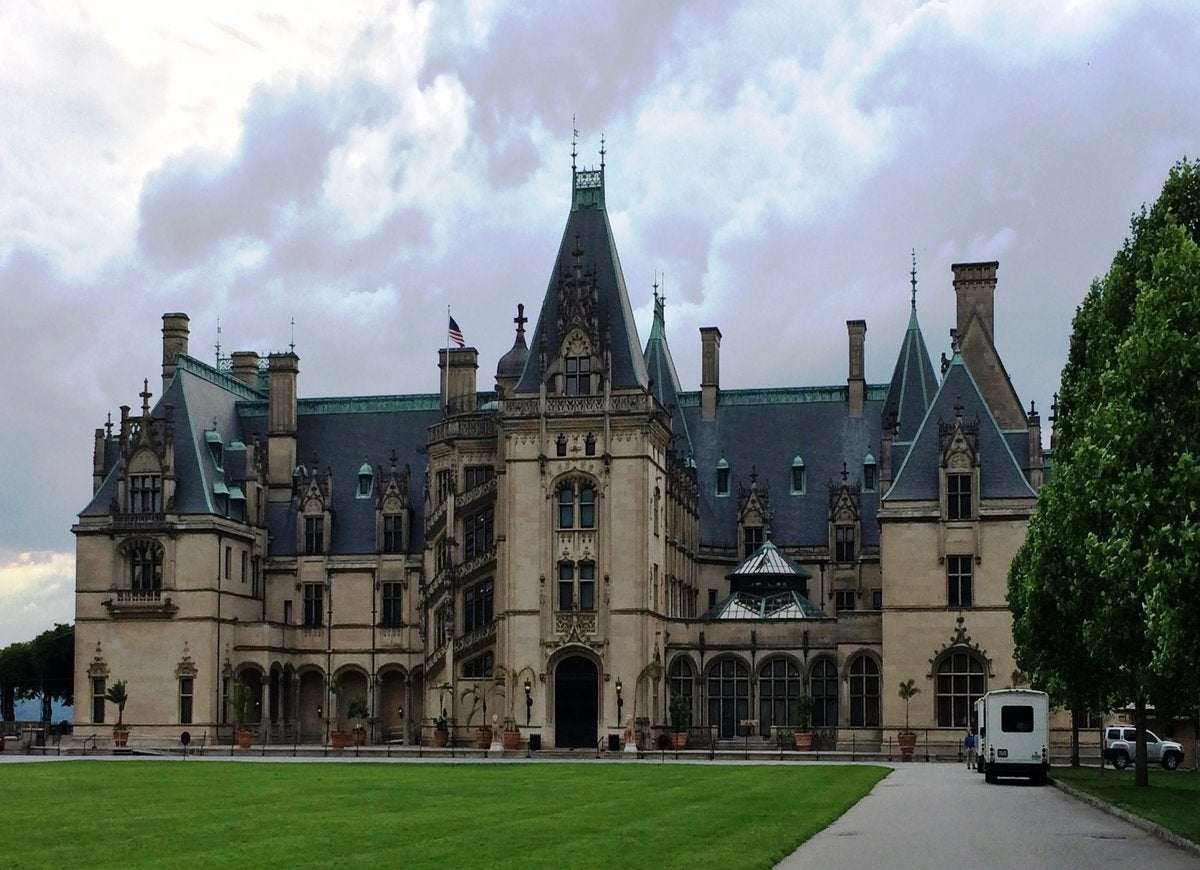
wikimedia.org via JST Tx
Built between 1889 and 1895 as a summer home for art collector and socialite George Vanderbilt II, this Chateauesque mansion stands as an enduring testament to the opulent Gilded Age of America. Evidently accustomed to living large, Vanderbilt himself dubbed the 6,950-acre estate his “little mountain escape.”
Related: 35 Places in America That Look Like Foreign Countries
Chrysler Building in New York, New York
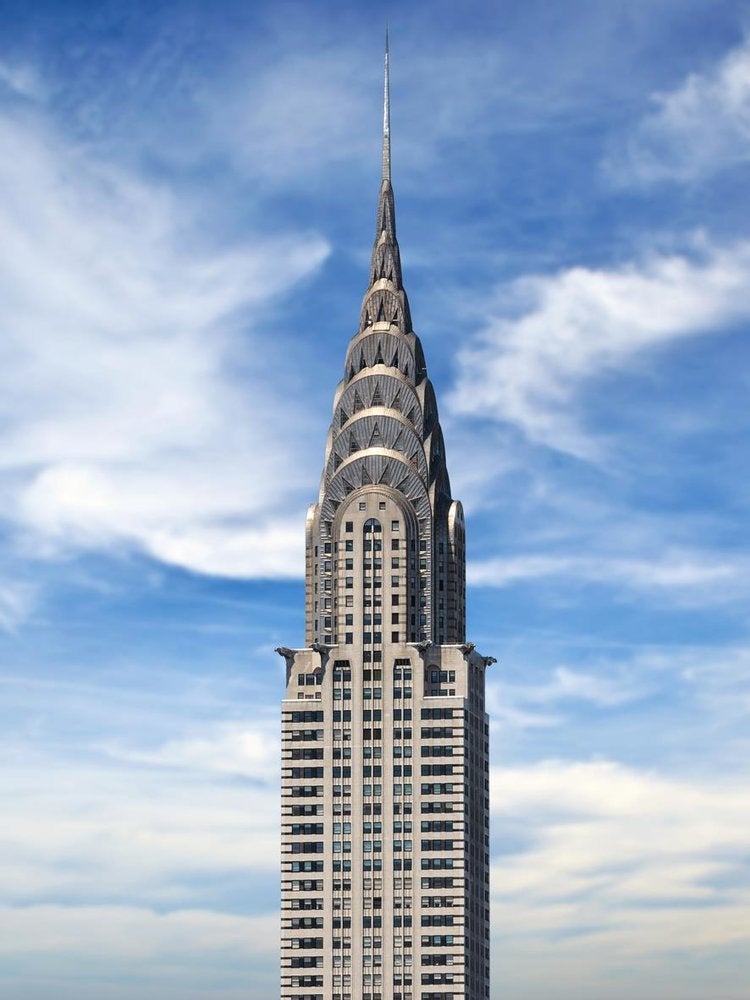
Completed in 1930, and serving as Chrysler’s headquarters until the mid-1950s, this 1,046-foot steel marvel with a scene-stealing terraced crown pays homage to Chrysler automobiles through radiator cap ornaments and a frieze of hubcaps and fenders on the 31st floor.
Taliesin near Spring Green, Wisconsin
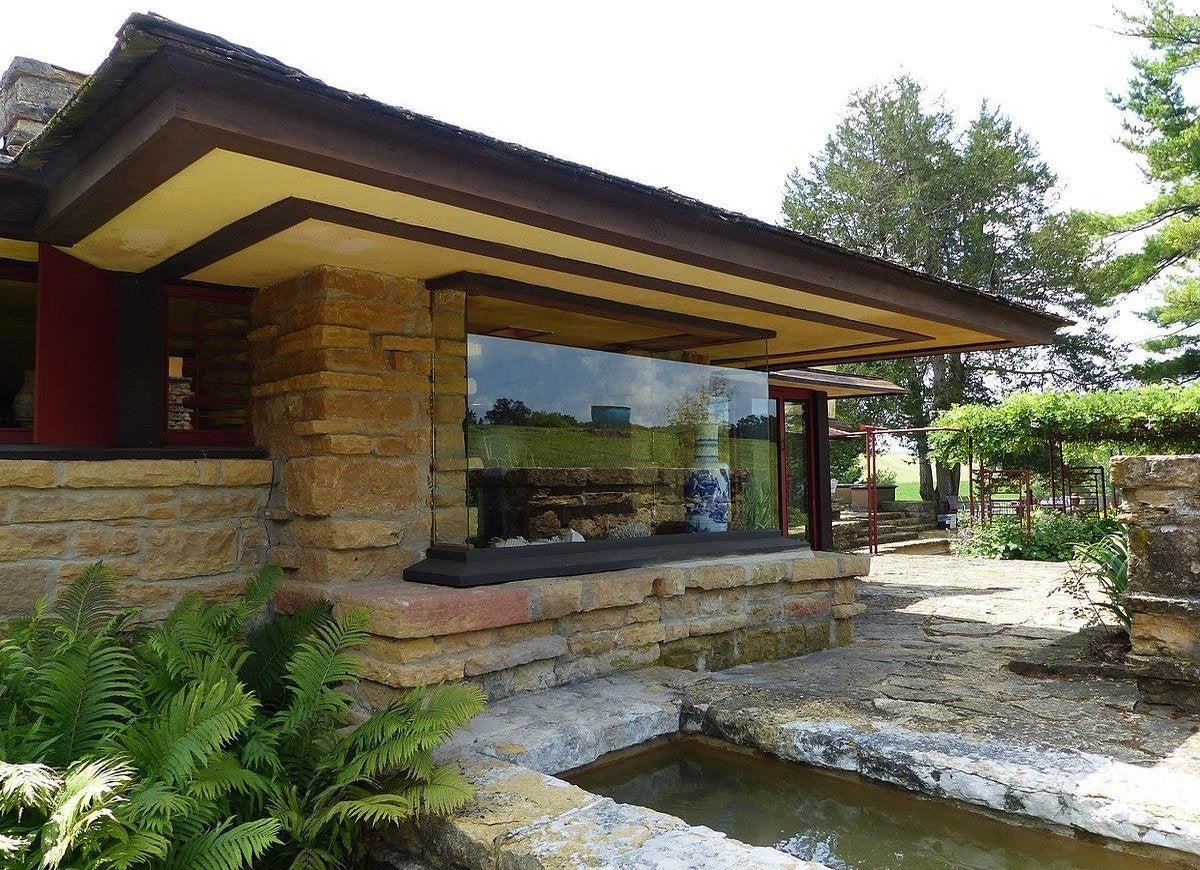
wikimedia.org (Stilfehler)
Now a museum and a home for the School of Architecture at Taliesin, Frank Lloyd Wright’s 600-acre former home was built to accommodate not simply his own pursuits, but those of the whole Wright family. In addition to the main home, the estate includes the Tan-y-Deri, a home for his sister and brother-in-law; the Hillside Home School, which housed his aunt’s school; the Midway Barn, a farming facility; and the Romeo and Juliet Windmill.
Hearst Castle in San Simeon, California
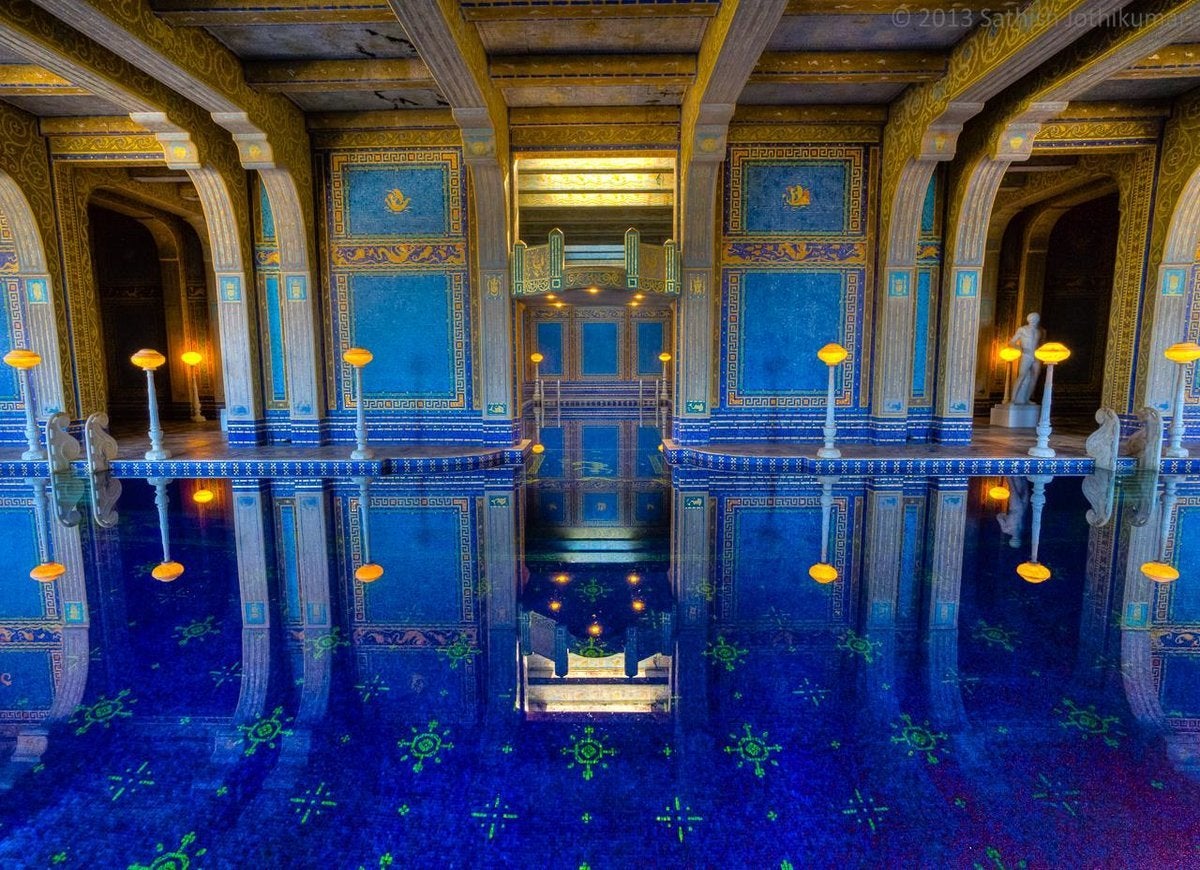
flickr.com (Sathish J)
Once a hot spot for Hollywood elites like Charlie Chaplin and Cary Grant, this 71-year-old, 90,000-square-foot Mediterranean Revival former residence of newspaper magnate William Randolph Hearst annually attracts on the order of a million tourists from all walks of life.
United States Air Force Academy Cadet Chapel near Colorado Springs, Colorado
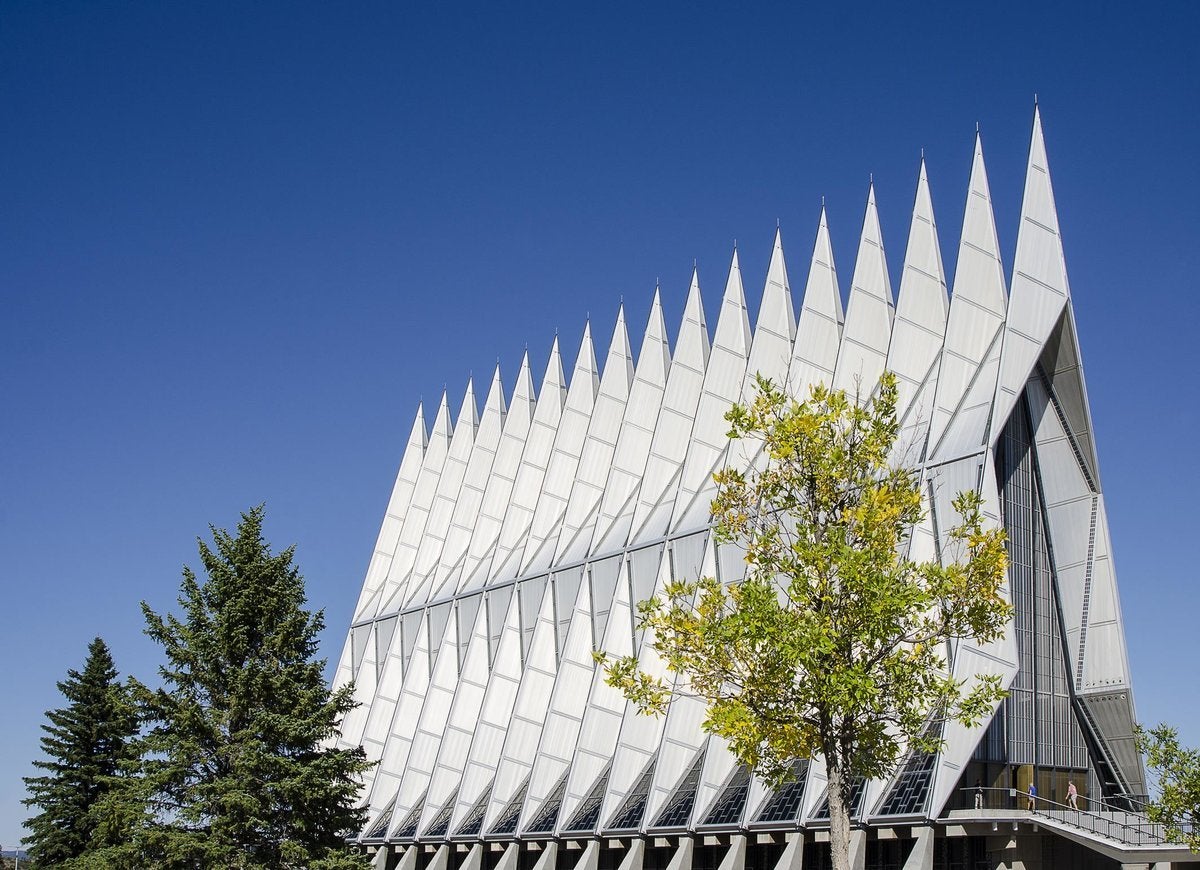
Featuring Protestant, Catholic, Jewish, and Buddhist wings, this Midcentury Modern establishment is as progressive in its architecture as in its interfaith approach to a house of worship. The futuristic steel-framed building boasts 100 tetrahedrons, colored glass, and a series of 17 striking spires.
Fontainebleau Miami Beach in Miami Beach, Florida

The photogenic looks of this 1.9-million-square-foot resort have earned it starring roles in films like “Goldfinger” and “Scarface.” Built in 1954, it has a whopping 1,504 rooms, a 40,000-square-foot mineral water spa, and a splash-making bow-tie-shaped pool.
The Texas State Capitol Building in Austin, Texas
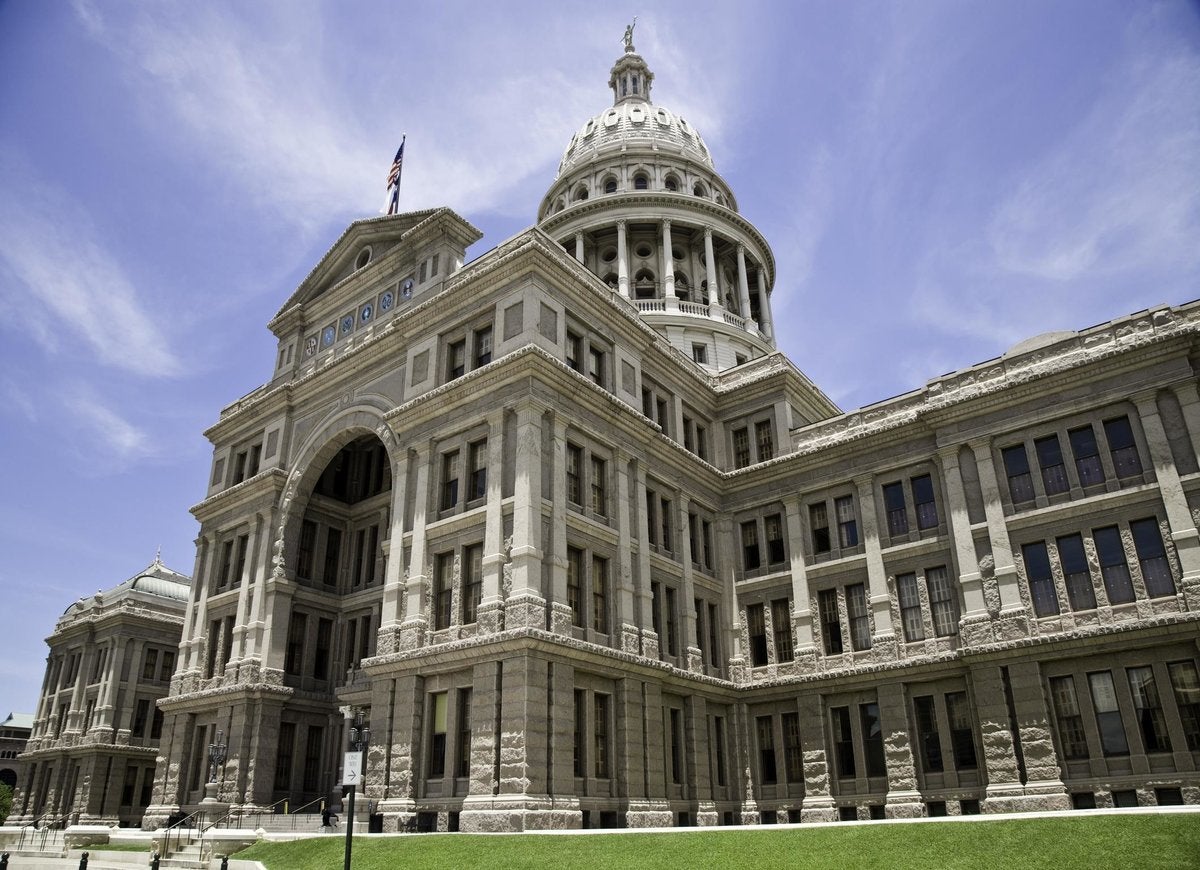
Proof that things really are bigger in Texas, the state’s granite seat of government, built in 1885, stands at 303 feet tall—roughly 14 feet taller than the U.S. Capitol after which it was modeled.
John F. Kennedy Presidential Library and Museum in Boston, Massachusetts
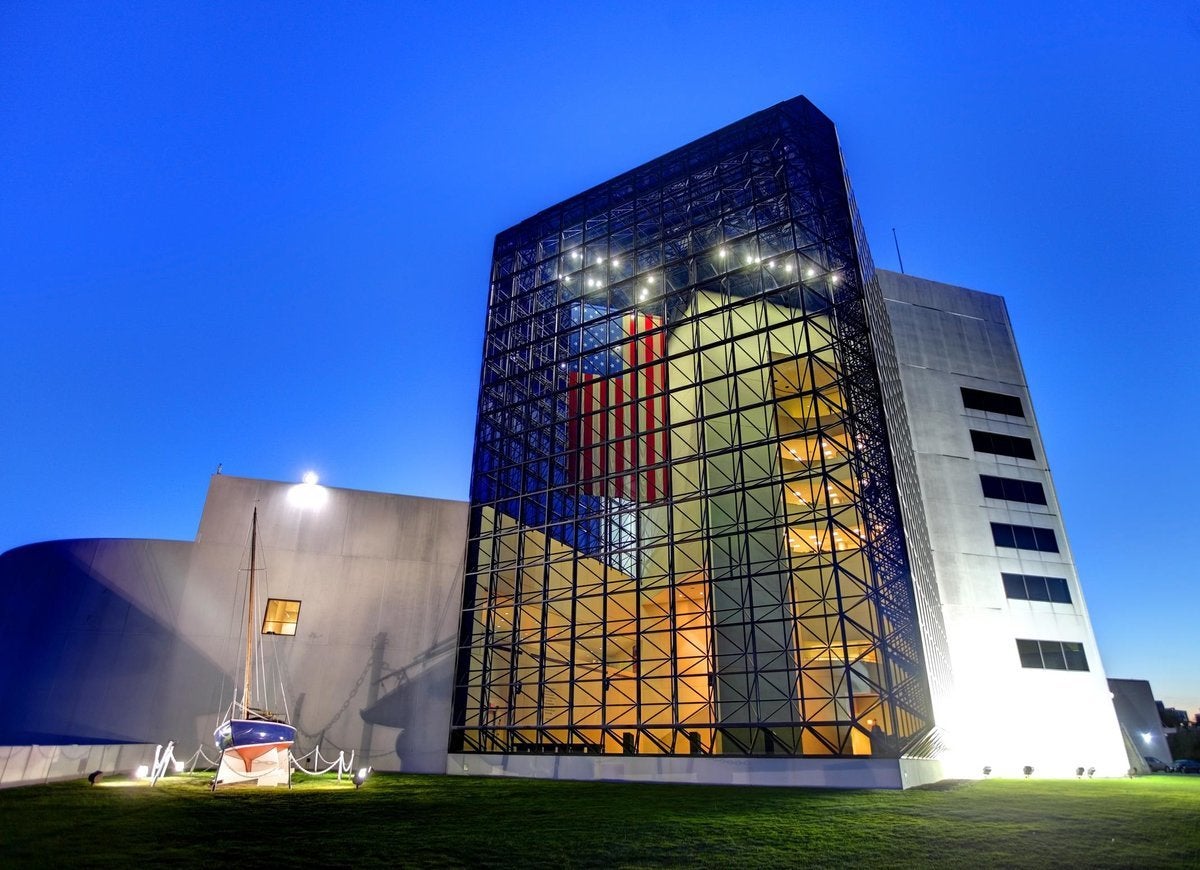
There are no bad views of this geometric concrete, steel, and glass archive building completed in 1979, but architect I.M. Pei claimed that the best vantage point from which to take in its beauty was its restricted area.
Related: 20 Amazing Places You Aren’t Allowed to Visit
Fisher Building in Detroit, Michigan
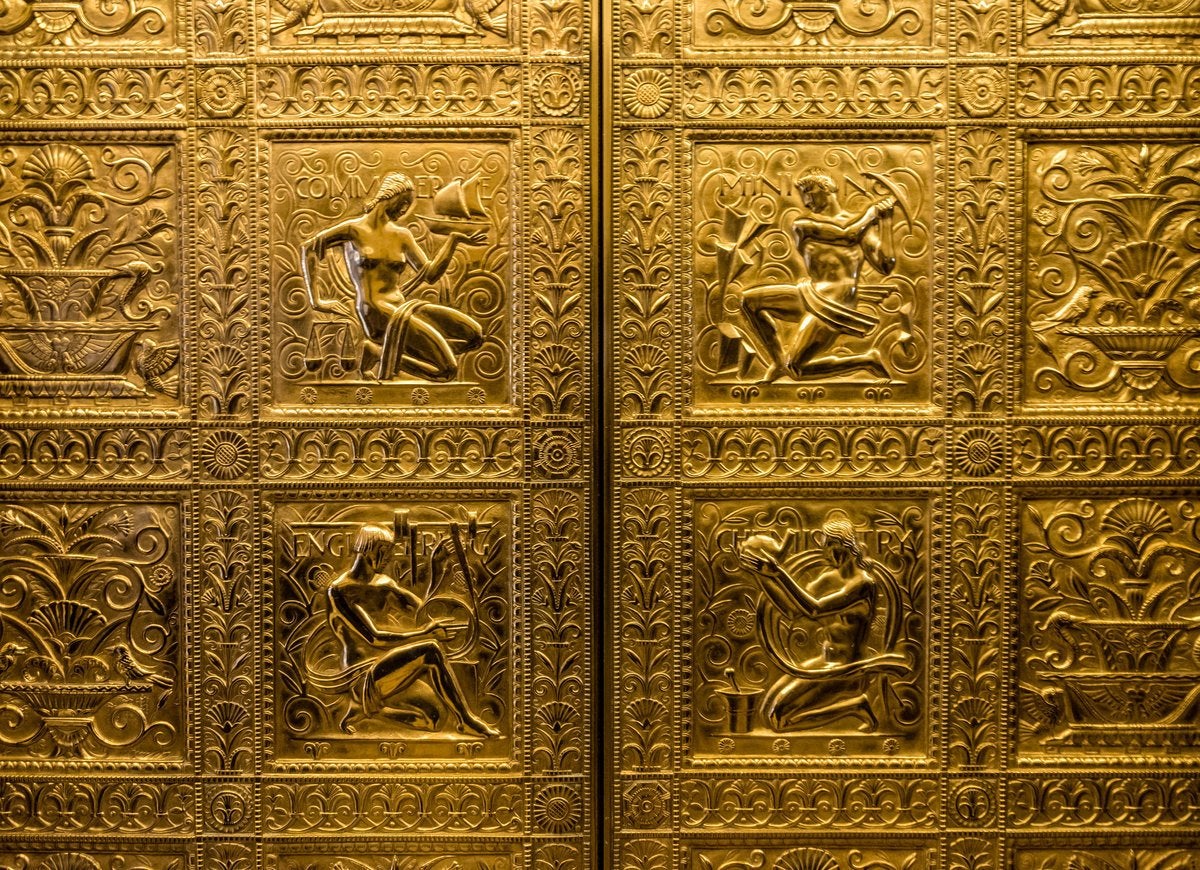
flickr.com (Raphaël Vandon)
Detroit’s Fisher Building boasts 428 feet of granite, limestone, and forty different types of marble—an achievement that earned it a silver medal in architecture by the Architectural League of New York in 1929.
Griffith Observatory in Los Angeles, California
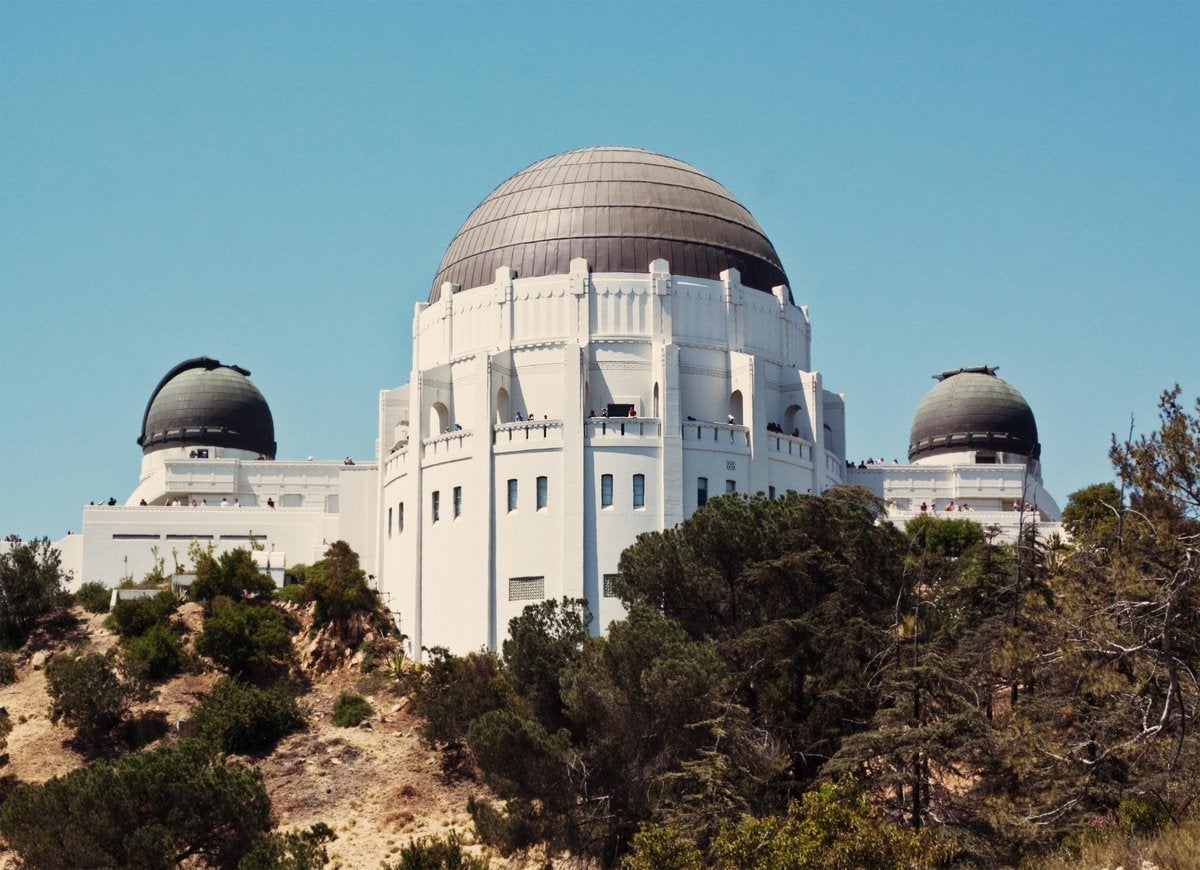
L.A.’s most renowned objet d’art lies not within the famous Broad Museum, but rather on Mount Hollywood. The three-domed Greek Revival-style complex opened all the way back in 1935 and still attracts sightseers who hope to gaze into the great Milky Way.
St. Louis Cathedral in New Orleans, Louisiana
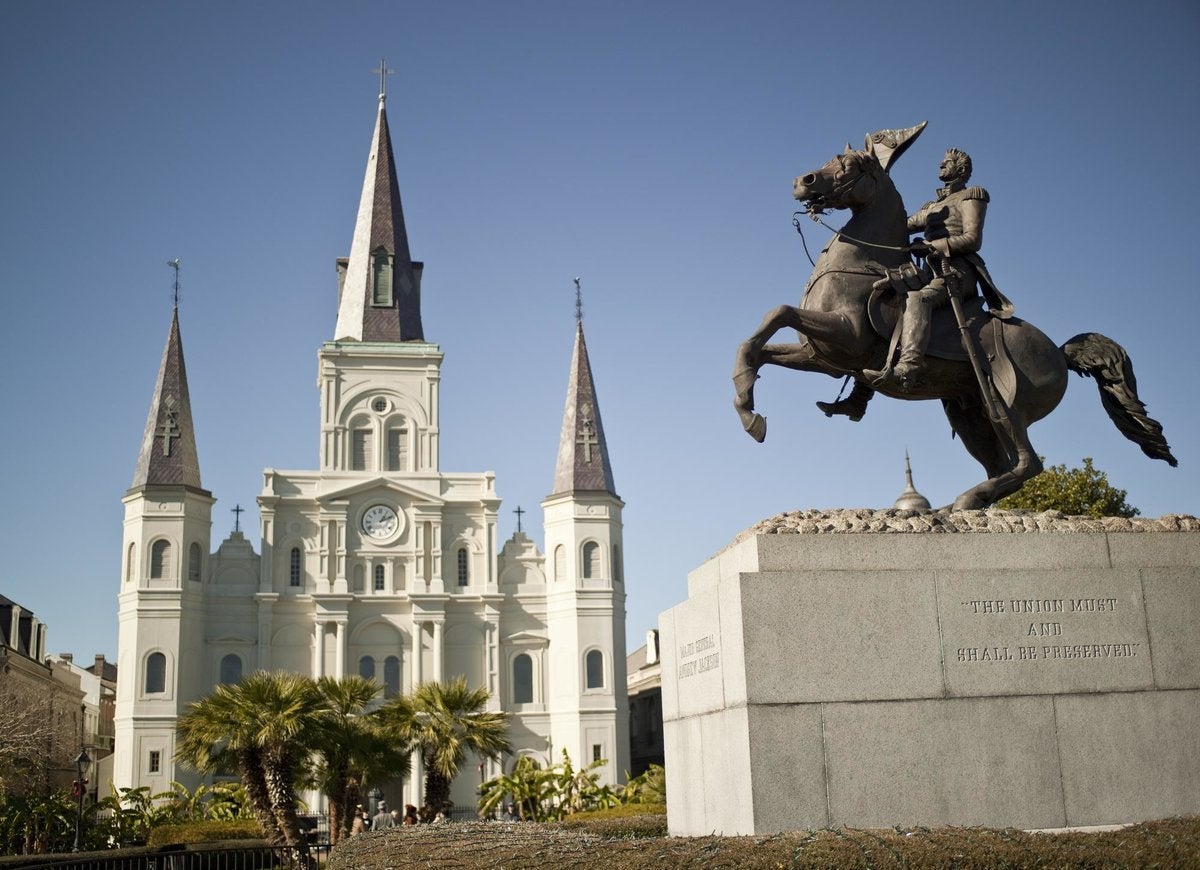
The French Quarter of the Big Easy is rife with historic buildings, but perhaps none is as head-turning as this Neo-Gothic cathedral completed in 1794 (and rebuilt in 1850) to house the Roman Catholic Archdiocese of New Orleans.
Flatiron Building in Atlanta, Georgia
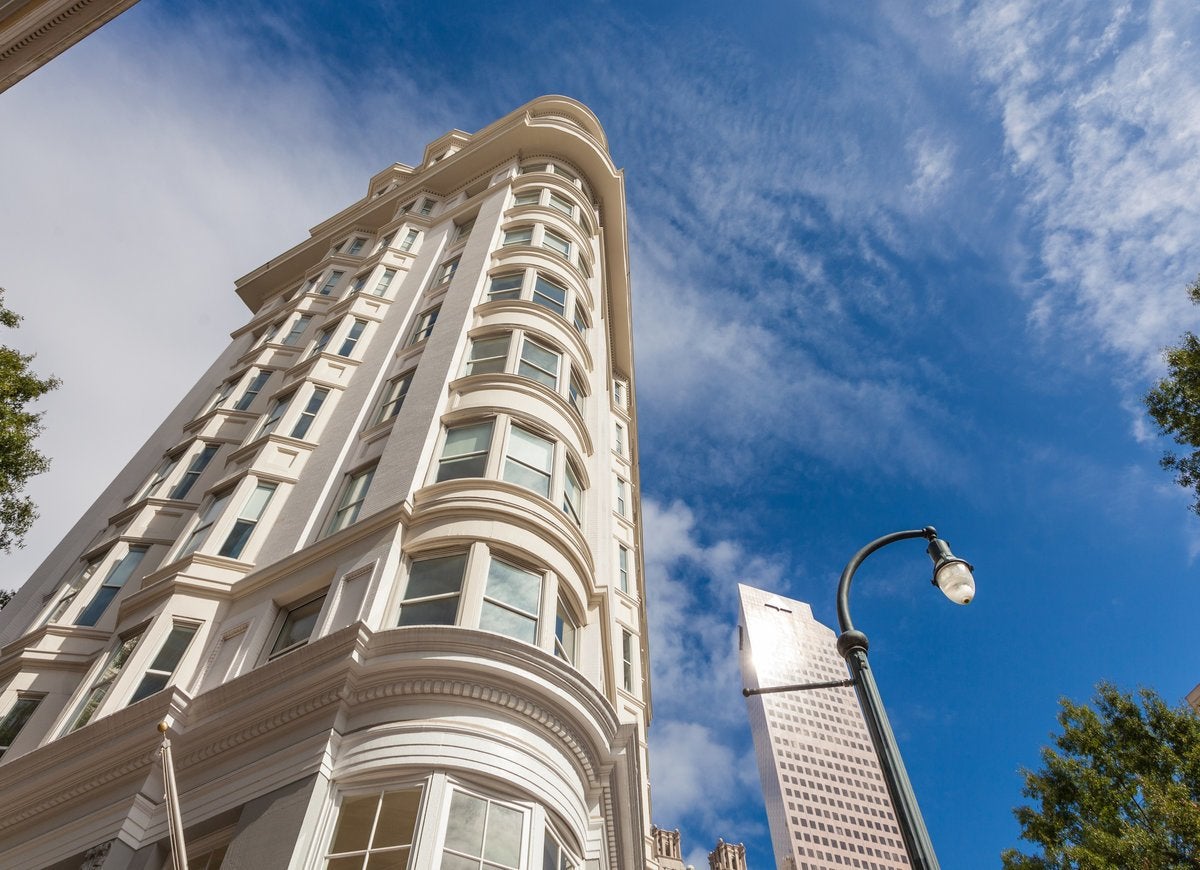
In 1897, five years before construction was completed on New York’s Flatiron Building, Atlanta unveiled the original wedge-shaped edifice downtown. Impressively, the sliver of a building boasts 44,000 square feet and includes 11 floors occupied by businesses large and small.
Glass House in New Canaan, Connecticut

You know what they say about people who live in glass houses. They can go sunbathing and nature spotting without leaving their home, which is precisely as Philip Johnson intended when he constructed this cutting-edge charcoal-painted steel and glass home for himself in 1949.
The Willis Tower in Chicago, Illinois
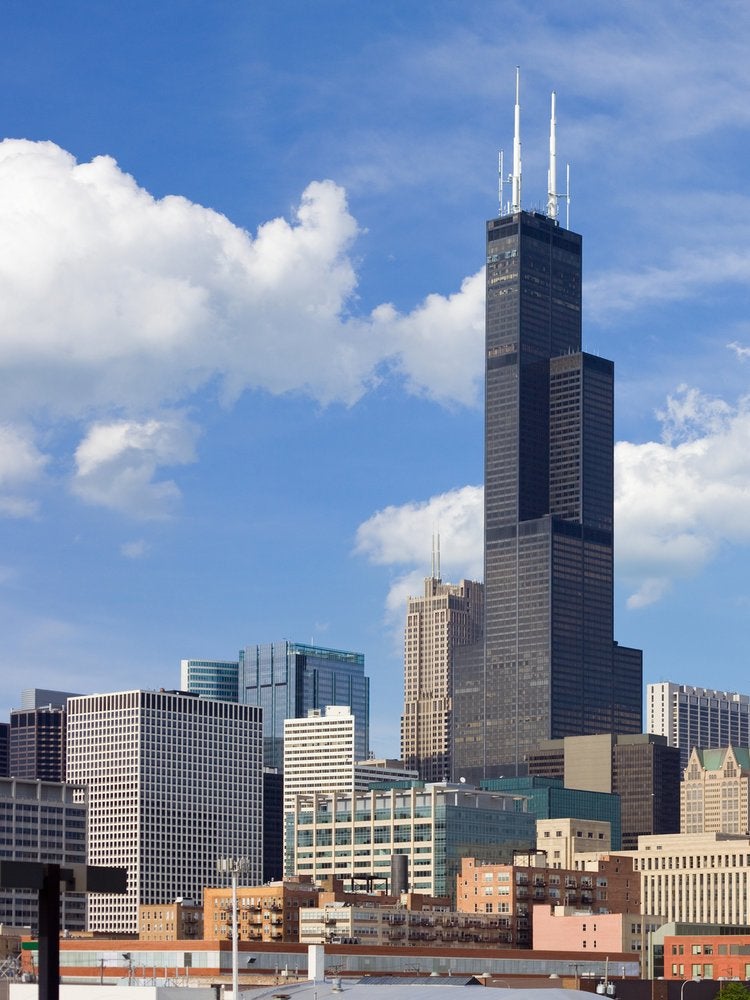
Formerly known as the Sears Tower, this colossal, 1,451-foot tower completed in 1973 was the first to feature a bundled tube structure. It remains the second-tallest building in the country after One World Trade Center.
USS Arizona Memorial in Honolulu, Hawaii
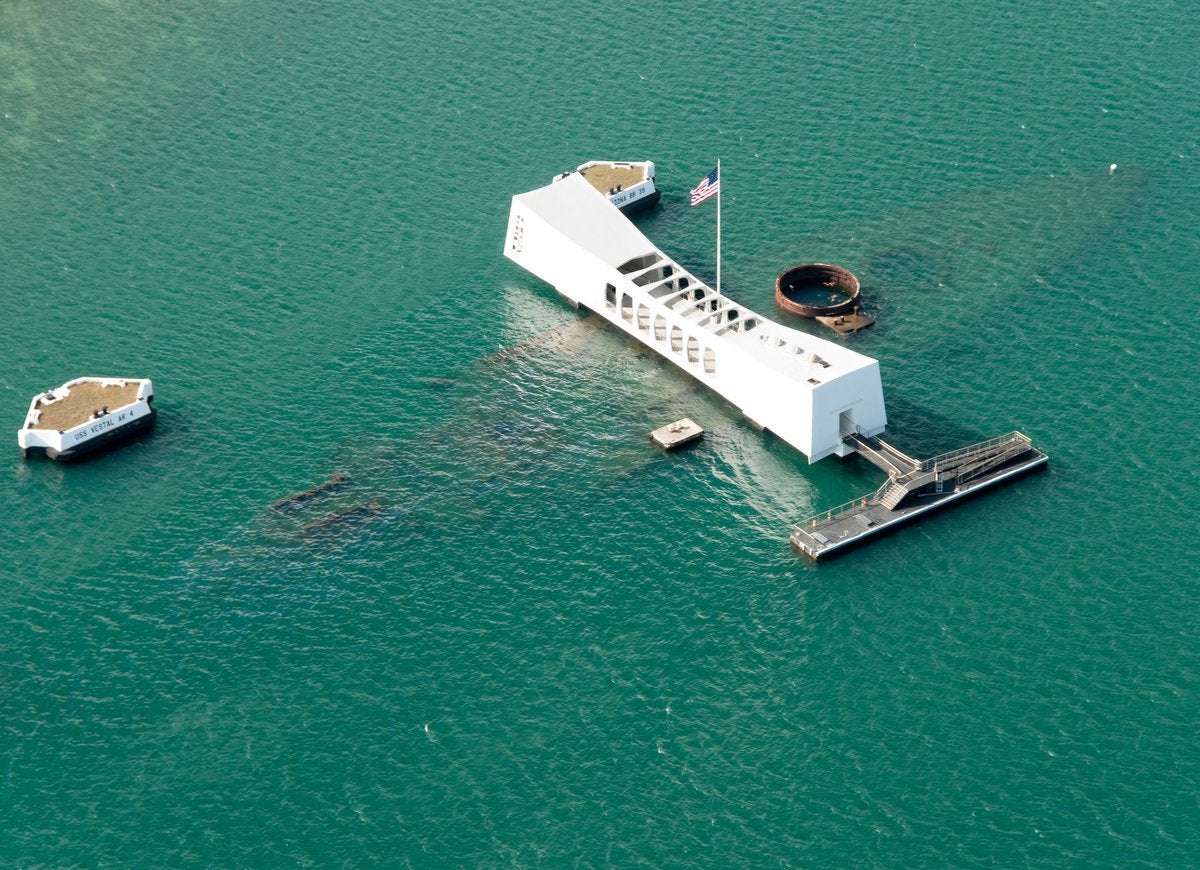
The USS Arizona sank after it was bombed during the surprise attack at Pearl Harbor on December 7, 1941. The ship’s namesake, this 10.5-acre memorial, was built in 1962 over the submerged hull of the ship to commemorate the sailors and marines who lost their lives on that fateful day.
Churchill Downs in Louisville, Kentucky

Since 1875, the annual winner of the Kentucky Derby has been crowned with a garland of roses at this racetrack. The home of the famed horse race is still known as much for its architecturally daring twin-spire grandstand as for the speedy stallions that stampede across its track.
Gateway Arch in St. Louis, Missouri
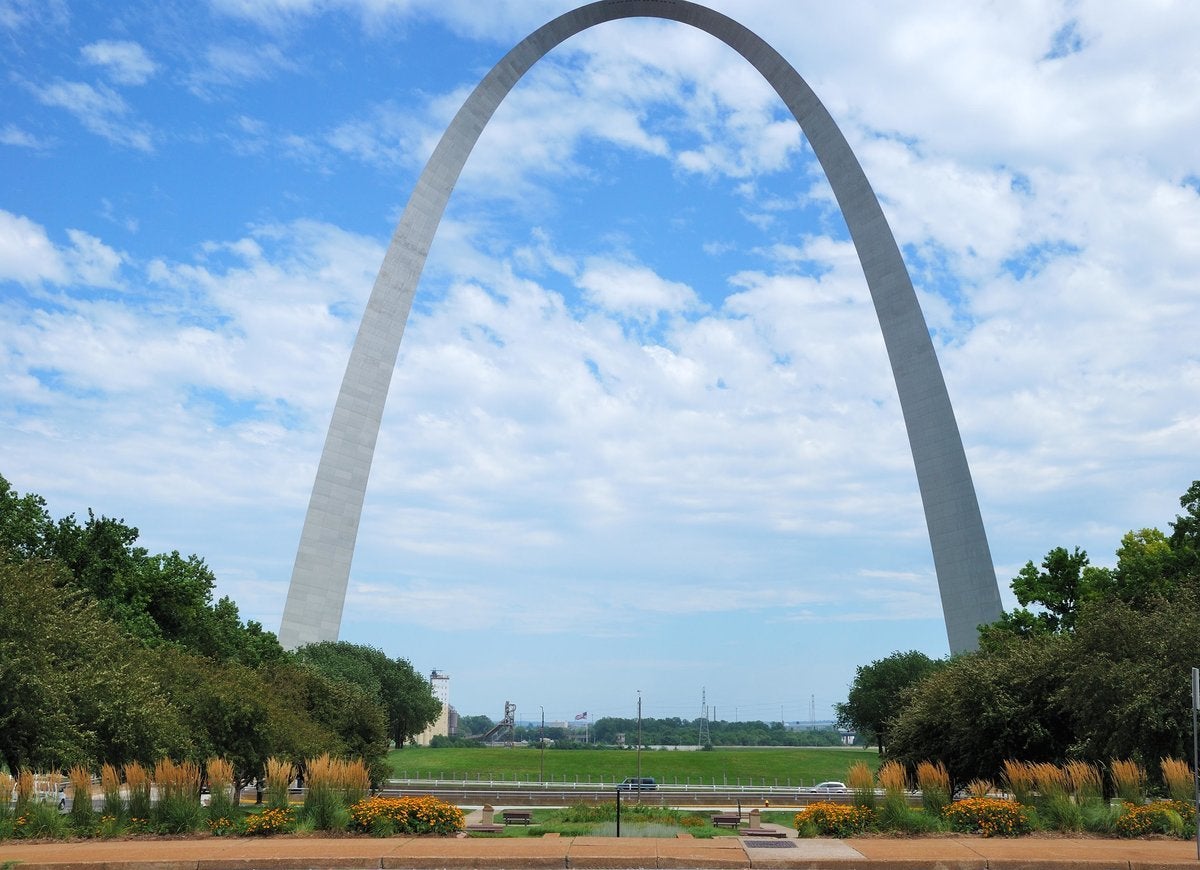
Built in 1965 on the western bank of the Mississippi River, this 630-foot stainless steel monument modeled after a weighted catenary arch symbolizes westward expansion in America.
Taos Pueblo near Taos, New Mexico
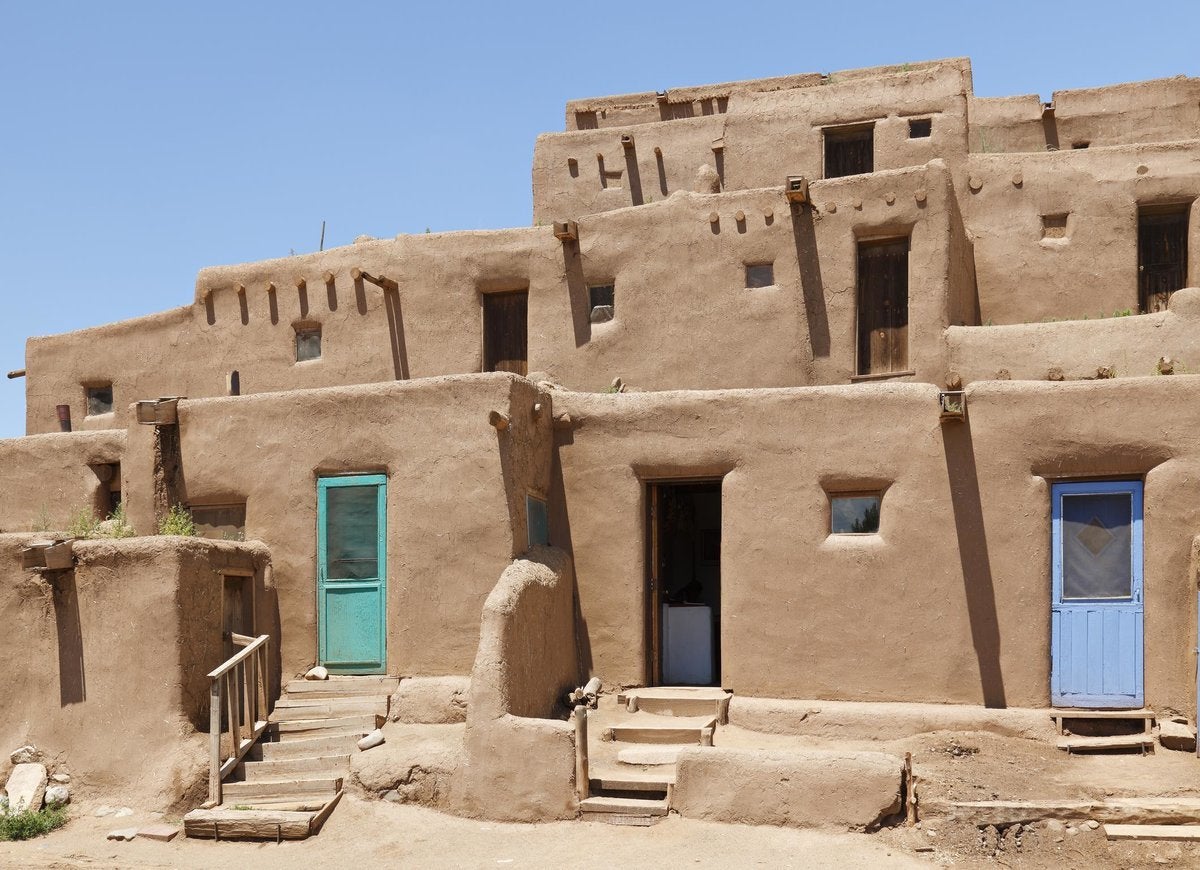
There’s no plumbing, electricity, or running water permitted inside this complex of adobe multi-story pueblos, a UNESCO World Heritage Site. But rustic living conditions are to be expected given that the home of the Puebloan people was built between 1000 and 1450 A.D. and remains one of the oldest continually inhabited communities in the country.
Related: 20 American Treasures to See Now—Before They Disappear
Abraham Lincoln Memorial in Washington, D.C.
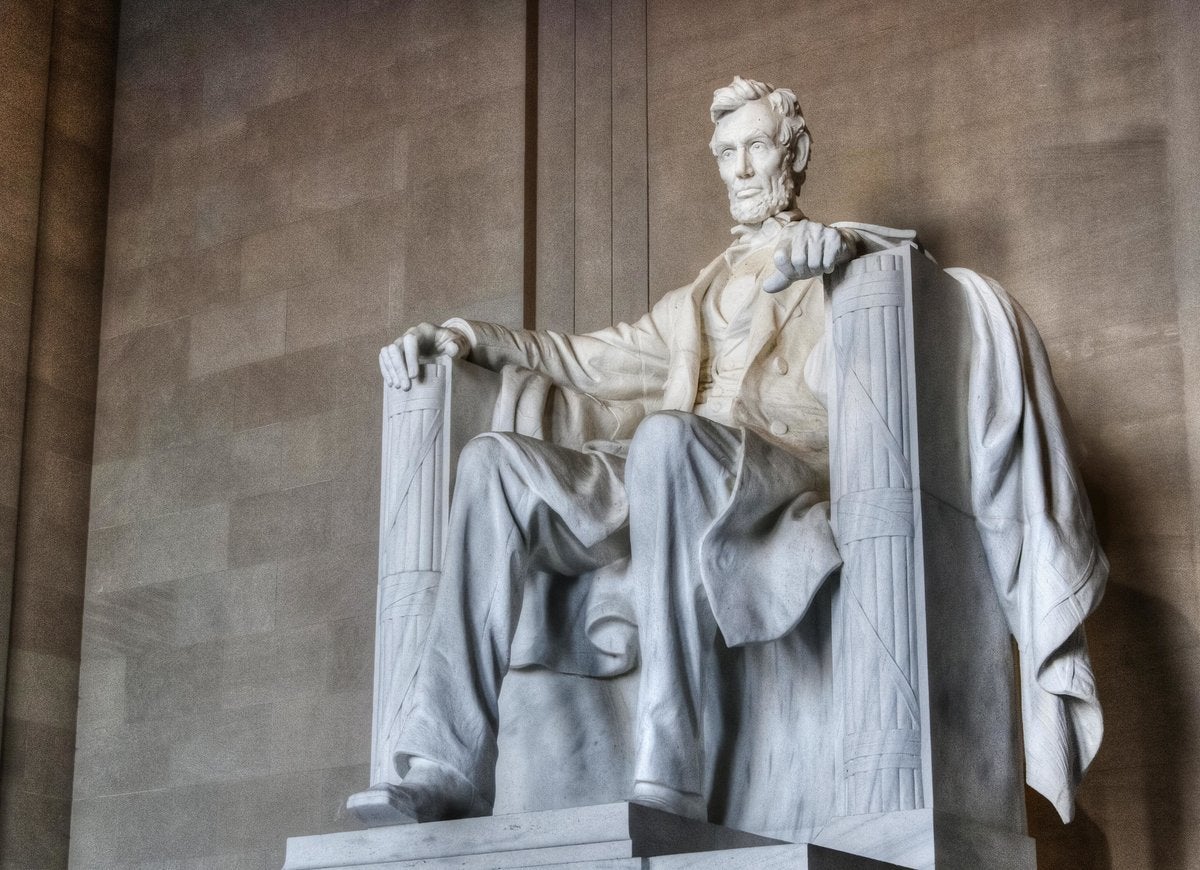
This 30-foot statue of a contemplative President Abraham Lincoln is a fitting tribute to one of America’s most towering figures. Housed at the Lincoln Memorial, the mammoth white Georgia marble monument was sculpted by Daniel Chester French and carved by the Piccirilli Brothers between 1920 and 1922.
Atlas in New York, New York
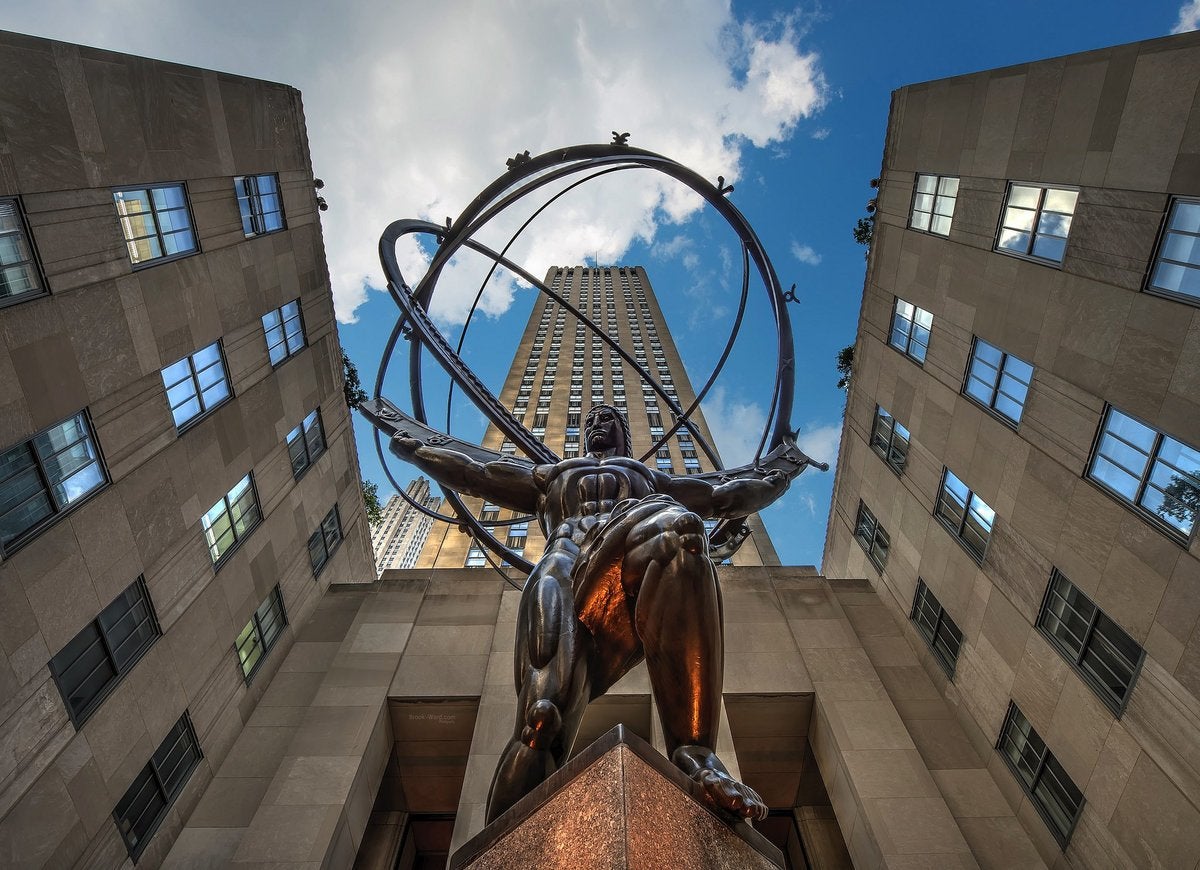
flickr.com via Brook Ward
At 45 feet tall, this 81-year-old bronze sculpture of the Ancient Greek hero Atlas bearing a celestial sphere on his shoulders is Rockefeller Center’s largest statue.
The Library Lions in New York, New York
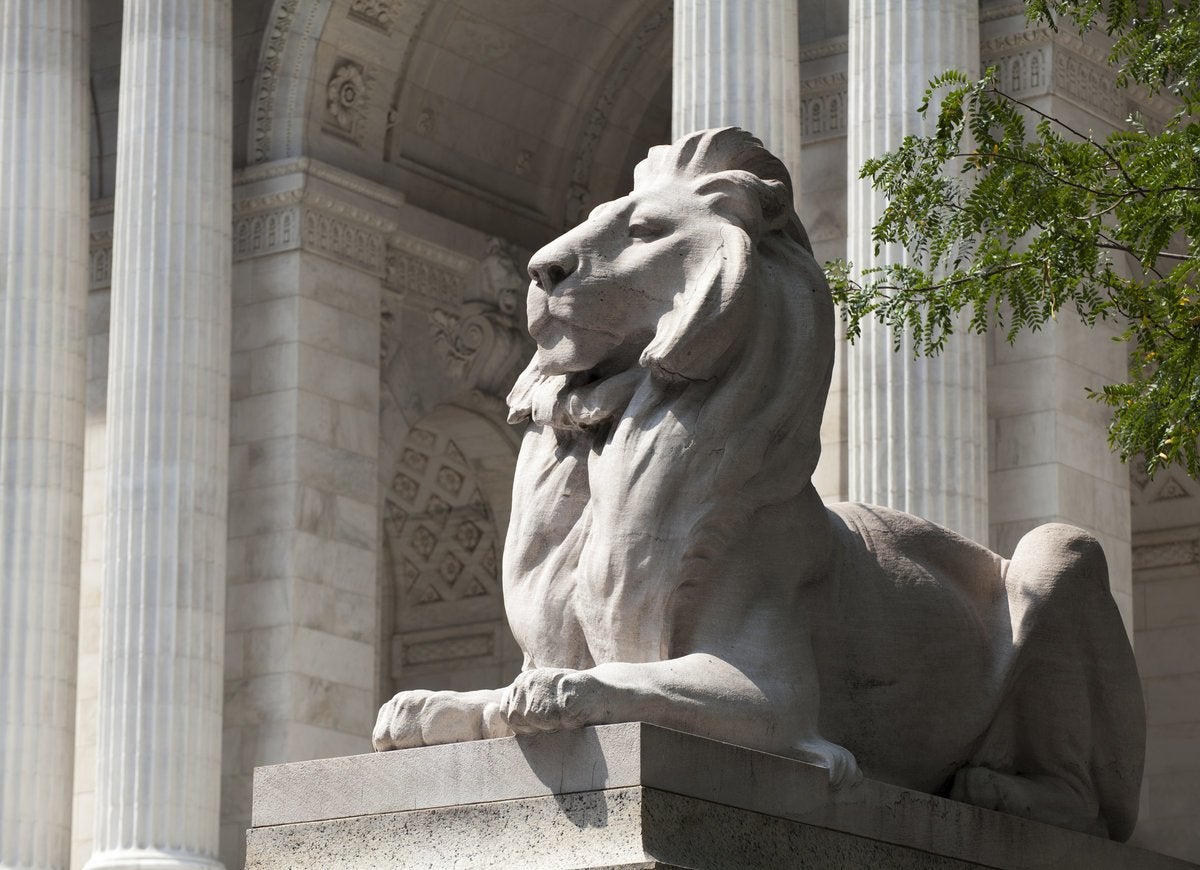
Sculpted by Edward Clark Potter and carved by the Piccirilli Brothers in 1911, the two stone lion statues that flank the entrance of the New York Public Library Main Branch have names: Patience and Fortitude.
Cloud Gate in Chicago, Illinois
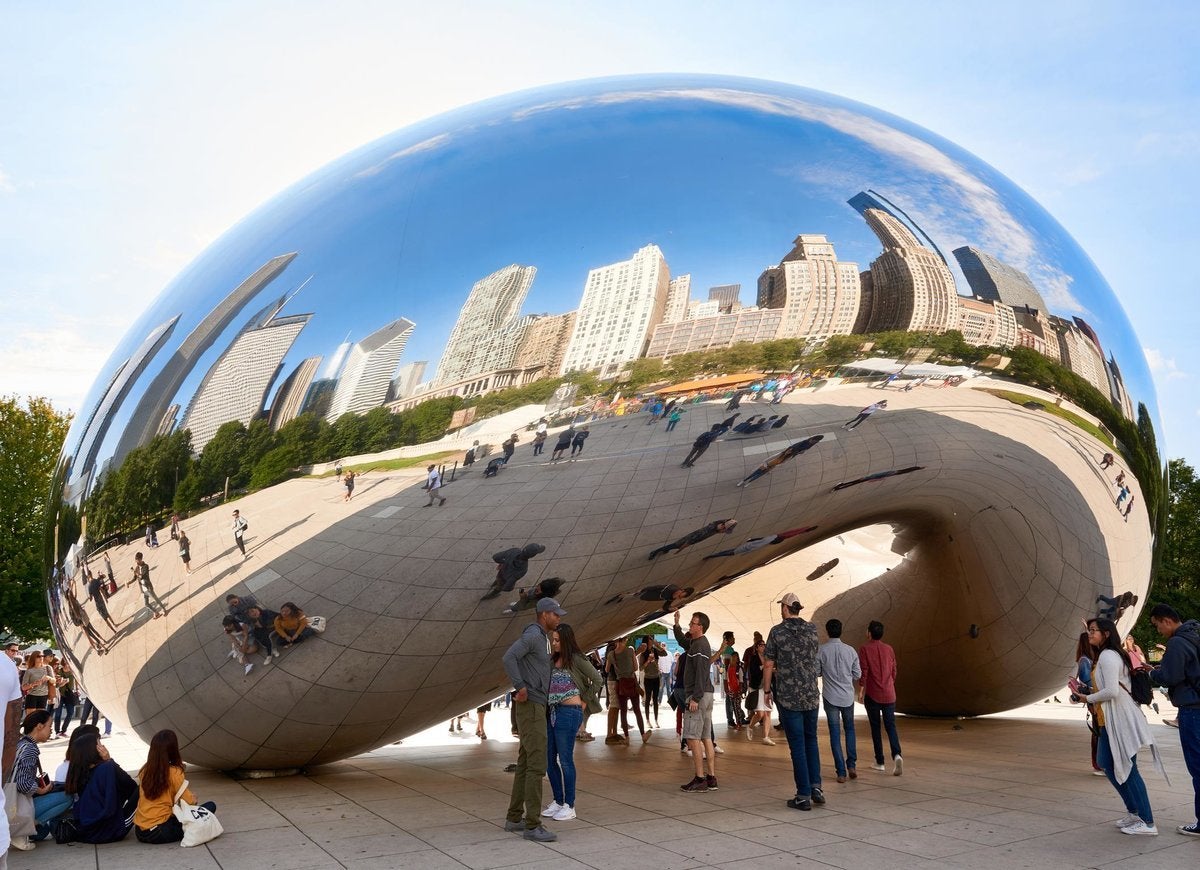
More commonly known as “The Bean” due to its legume-like shape, the 12-year-old public sculpture made of 168 stainless steel plates welded together was created in 2006 by sculptor Anish Kapoor.
The Spirit of Detroit in Detroit, Michigan
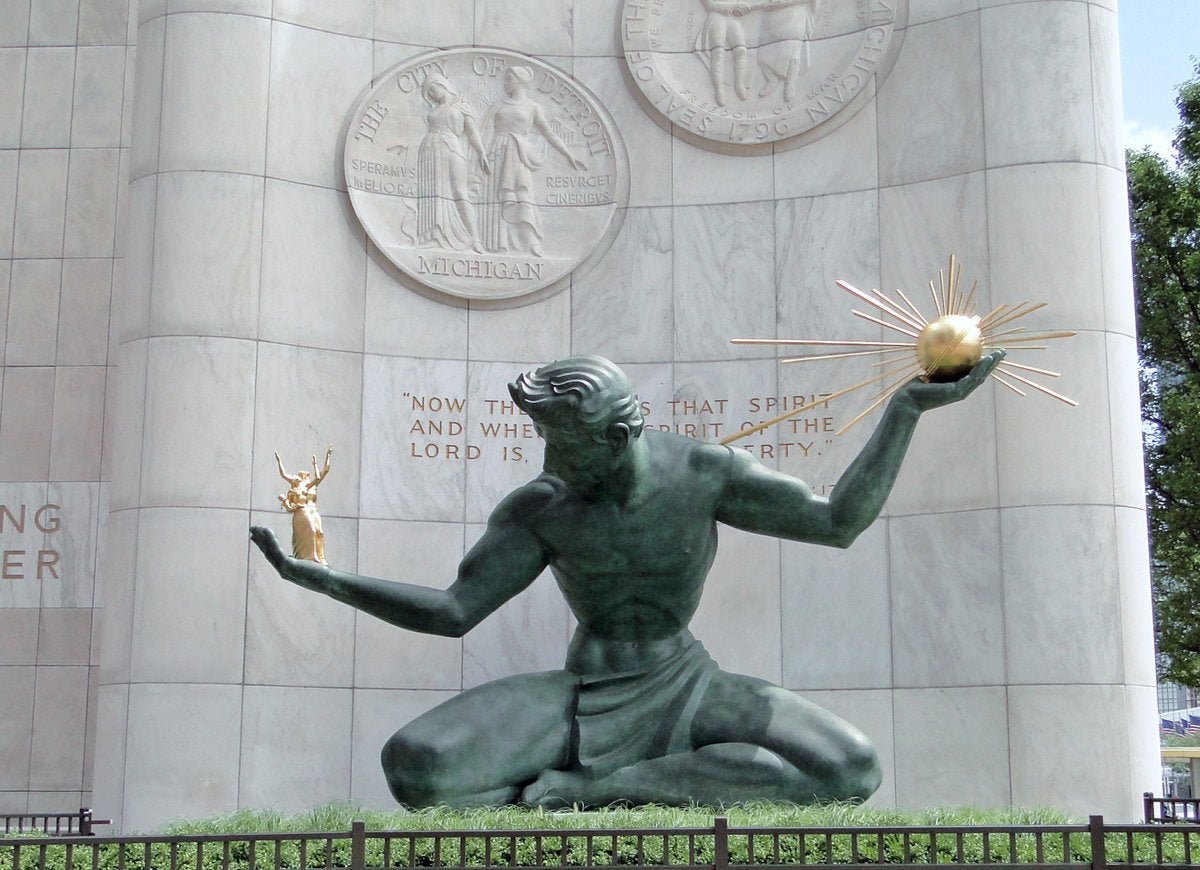
flickr.com via Maia C
Outside the Coleman A. Young Municipal Center, this bronze statue of a kneeling figure holding God in his left hand and a family unit in his right was built in 1958 to symbolize the convergence of spirituality and family.
Central Park in New York, New York
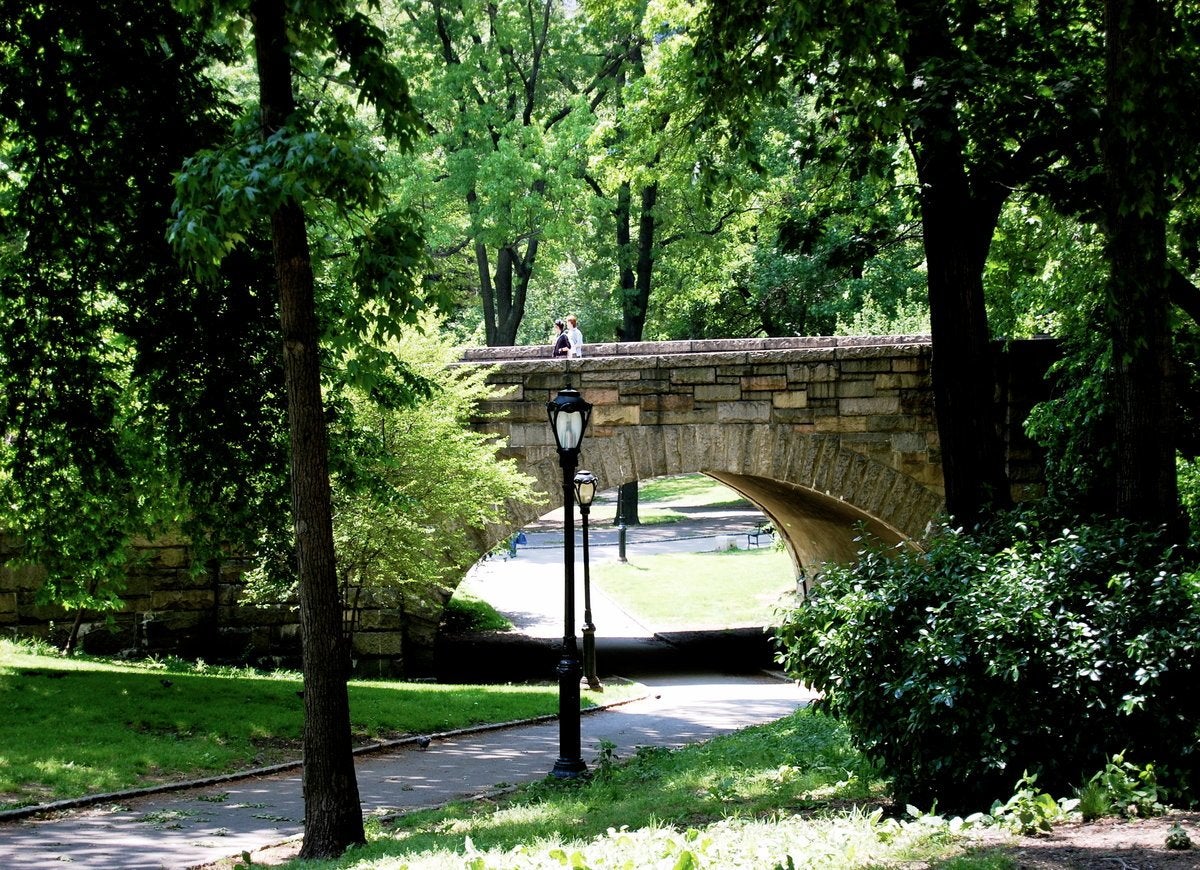
Credit goes to landscape architects Calvert Vaux and Frederick Law Olmsted for this beloved 843-acre green space completed in 1857 between the Upper West and Upper East sides of the city as a means to improve public health. Sadly, the creation of Central Park was the destruction of Seneca Village, an important settlement of free black landowners, that was once situated between 82nd and 89th Streets and was razed to make way for the greenspace.
The Haʻikū Stairs in Oahu, Hawaii
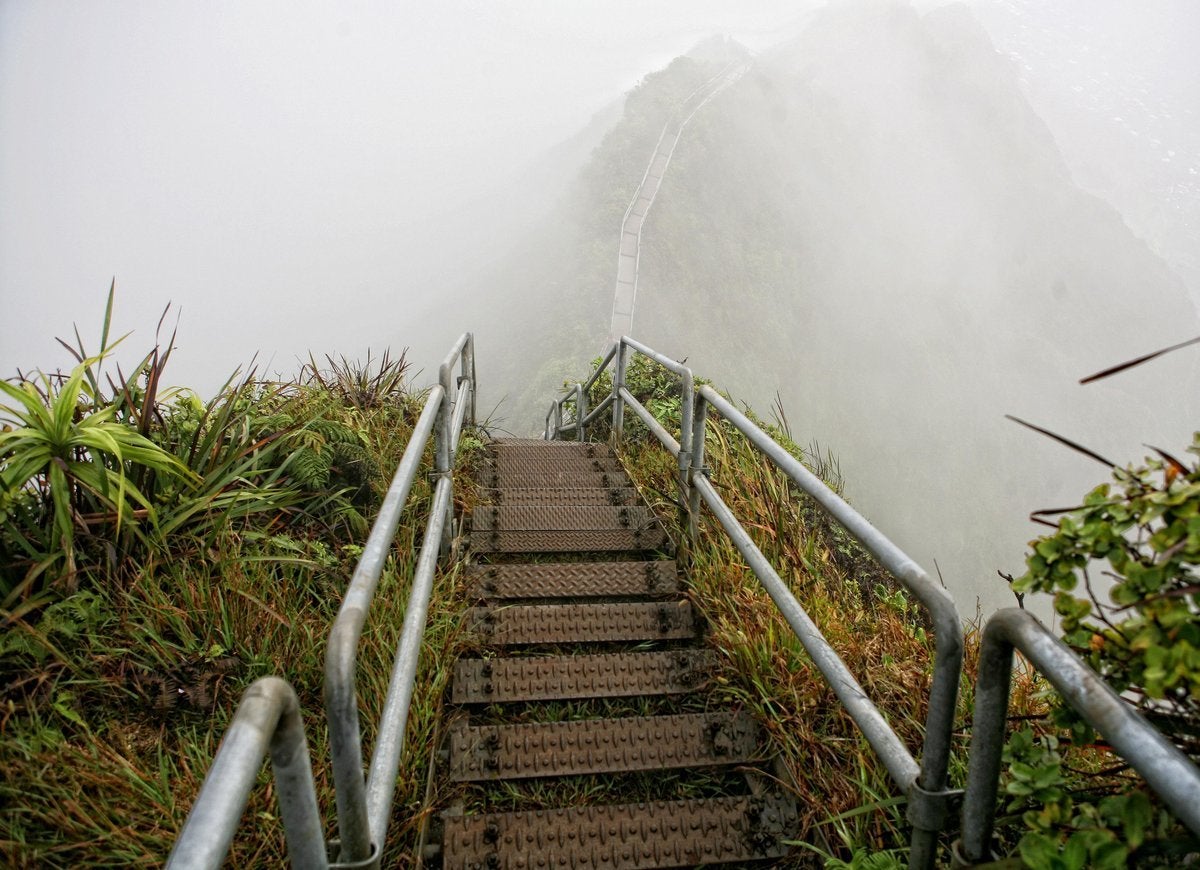
Built by U.S. Navy men circa 1942 to provide access to a mountainside radio station during World War II, the surreal “Stairway to Heaven” consists of 3,922 metal steps along Oahu’s Ko’olau mountain range that have been off-limits to the public since 1980 due to their weather-beaten condition.
Related: The 21 Wildest Places in America
